Go back to Oregon Cascades.
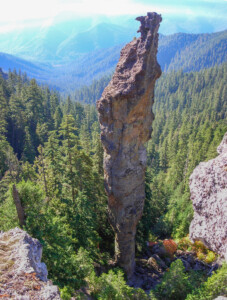
Turkey Monster.
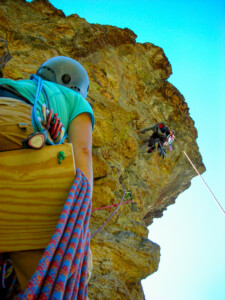
Pitch 3 of Dod Route.
.
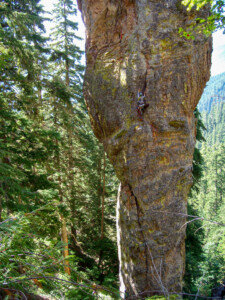
Pitch 1 of Dod Route.
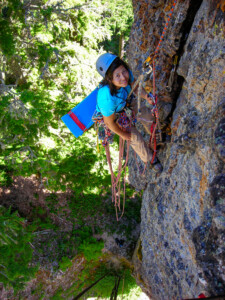
Pitch 2.
Some History
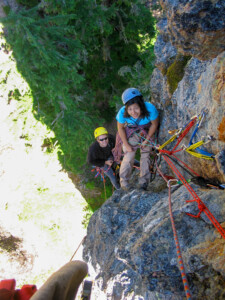
Shirley and Pat on pitch 2.
Of the three, Eugene Dod is the guy who first found this tower. His suggestion was to name the tower “Turkey Necked Monster”. That idea was defeated by Dave and the present name was thus settled on.
.
Also, Dave mentions:
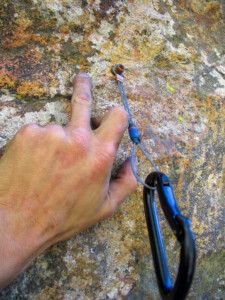
Fixed mank.
Can’t add much to Turkey Monster–mainly I remember the long approach through thick rhododendron thickets (the logging road hadn’t been pushed to where it is now) and prussiking (no jumars then) on the stretchy goldline ropes (you’d prussik a mile it seemed and still be where you started–it was always scary to transfer from a hanging belay to the rope because you’d drop so far if you didn’t get all the stretch out). Mainly I remember worrying about how we’d get down. Eugene really wanted it–I thought it too rotten and dangerous.
2006 – An Attempt
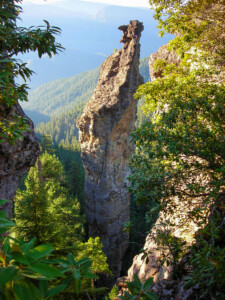
Turkey Monster.
2007 – The Climb
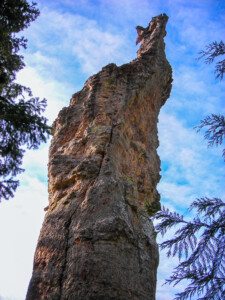
The Monster.
Given our experience from the previous fall, the approach two days ago went quickly. The bushwhack to the base is not terrible though the very last part is steep and so we fixed a line and rapped in (figuring we’d be done late). With the exception of the last pitch (low 5th slab), we aided the entire line. Aid was hammerless though I did use a cheater stick on P1 to get past a blank section (since my head was not into stepping out of the aiders). With exception of one new-ish looking bolt above the crack section on P1 and one very new bolt at P2 belay (Tyler? Much thanks!!!), all other fixed gear was as one would expect. We ran P1 and P2 together given the condition of fixed belay anchors atop P1.
Rope drag was horrendous enough to notice even from the safety of the aiders. The crack at start of P2 proper does have some loose rock around it however it seems like you can get some bomber large cams in good rock. The real scary part was actually midway up P2 where the left side of the chossy crack is formed by a huge flake. Each time I’d gently step up onto a cam, I could almost feel it expanding (probably my imagination). Shirley cleaned and Pat jugged a free rope.
.
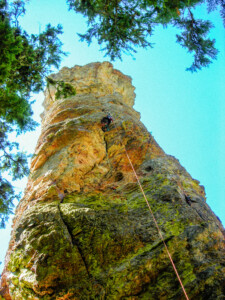
Pitch 2.
P3 is a super steep headwall on some very manky “bolts” (even by standards of P1) but none are missing. Highlight of the pitch is a 0.5″ hangerless stud with a slight downward orientation. Cheating past this point is not an option really as the “bolts” (seems like nails with tinfoil hangers, some nicely oxidized) feature tiny openings and getting a biner through takes some finagling.
Belay bolts at base of low 5th slab atop P3 were all old and so I continued to a sling belay 6 feet below the summit. Bleached tat was replaced – not sure when was the last time this summit had been visited but judging by the tat, it must’ve been a while? Shirley cleaned this pitch as well and Pat took a wild swing out of the belay into space when his turn to jug came. Given our lazy start from trailhead, the slowness of my leading, and the cluster f..ks at belays (not used to climbing with 3 people) the sun was getting low by the time we started rigging the rappels on the summit.
.
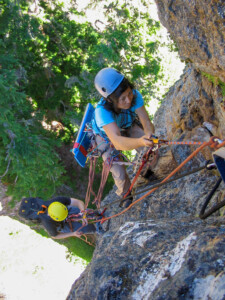
Pitch 2.
The ropes (thankfully) pulled without additional excitement. One more double rope rap brought us back to earth.
It was dark by the time our junk was packed and Shirley started jugging the fixed line back up the slope. A moment of excitement came as the line dislodged a two-fist-sized rock and it came hurtling through darkness impacting two feet away from my torso. At that point I reminded my wife that we had a joint mortgage in our names and no life insurance policy. The uphill bushwhack was painful but uneventful. Thoughts of going to Smith on Sunday were nixed and we drove home stopping for a nap followed by breakfast at a Sherrys in Lebanon (?) at 3 in the morning.
.
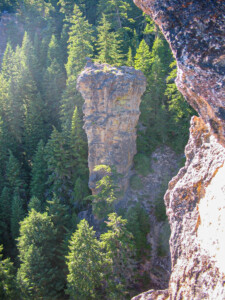
The Beast.
Many thanks to Jim Anglin and Tyler (both had since passed) on cascadeclimbers.com for beta on this thing.
Photos
October 2006
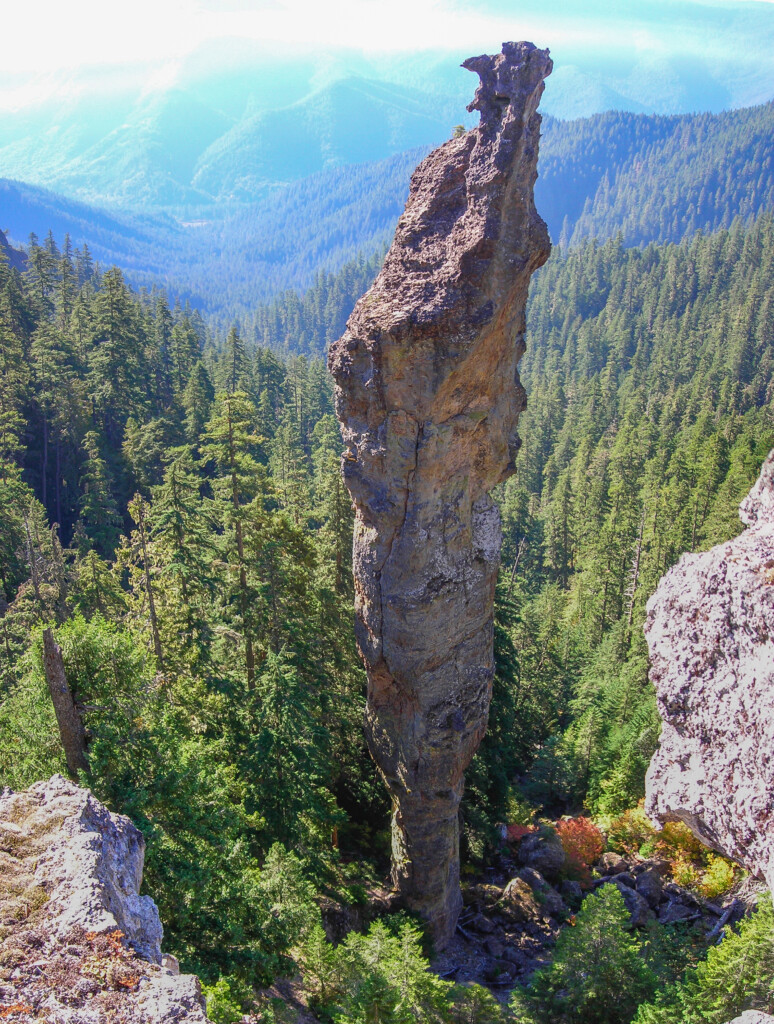
Turkey Monster in the Menagerie Wilderness as seen from an overlook point (Oct. 2006).

Shirley and Blondie at the Turkey Monster overlook (Oct. 2006).
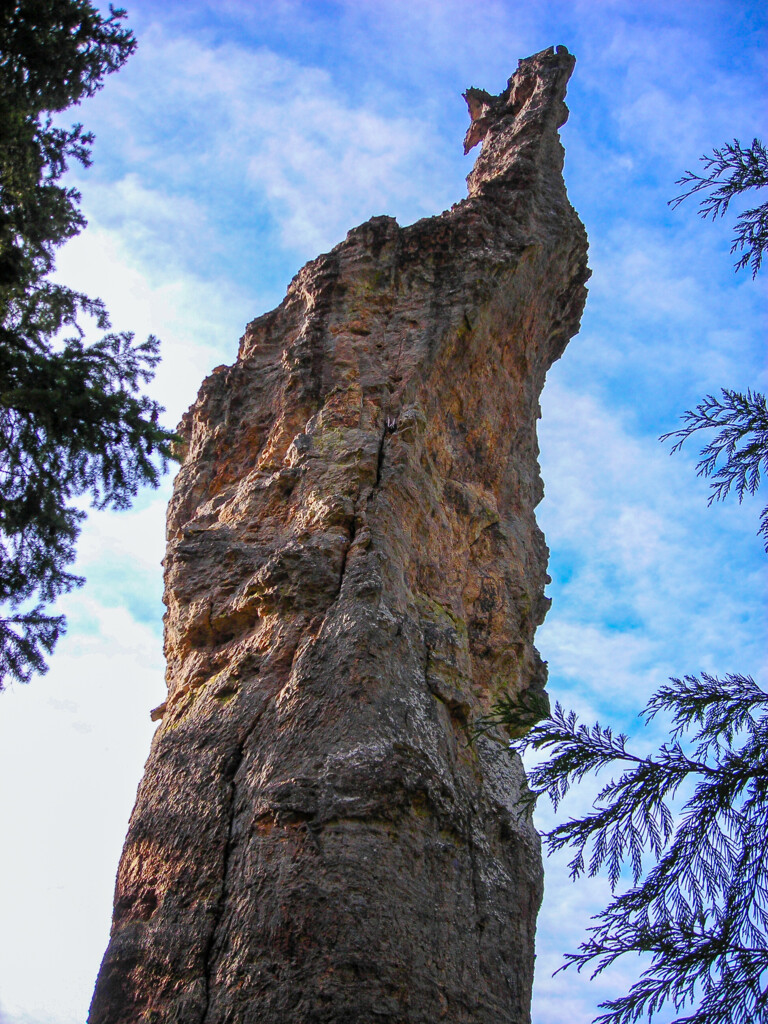
Looking up at The Monster from near the base (Oct. 2006).
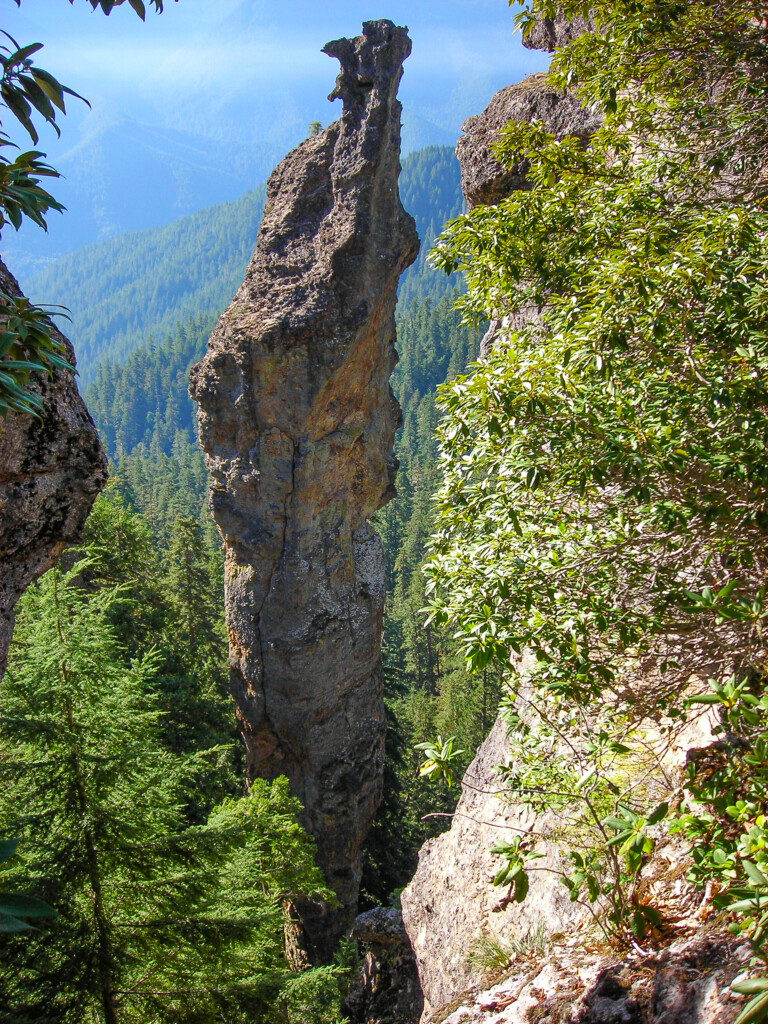
Turkey Monster (Oct. 2006).
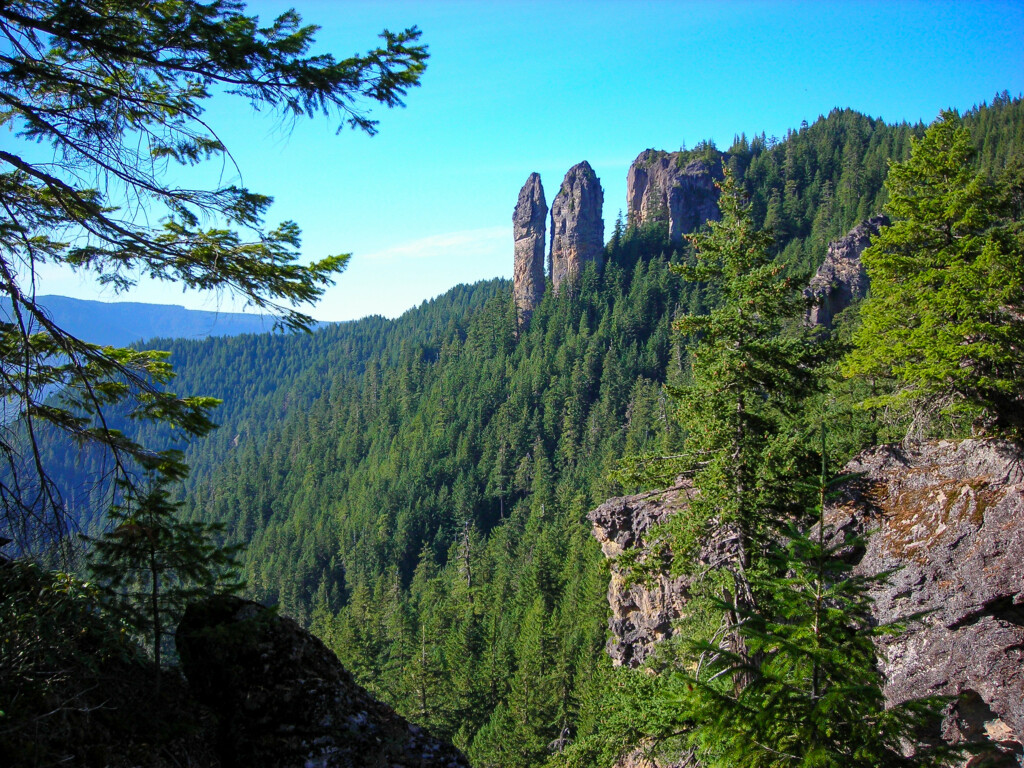
The Rabbit Ears from the Turkey Monster overlook (Oct. 2006).
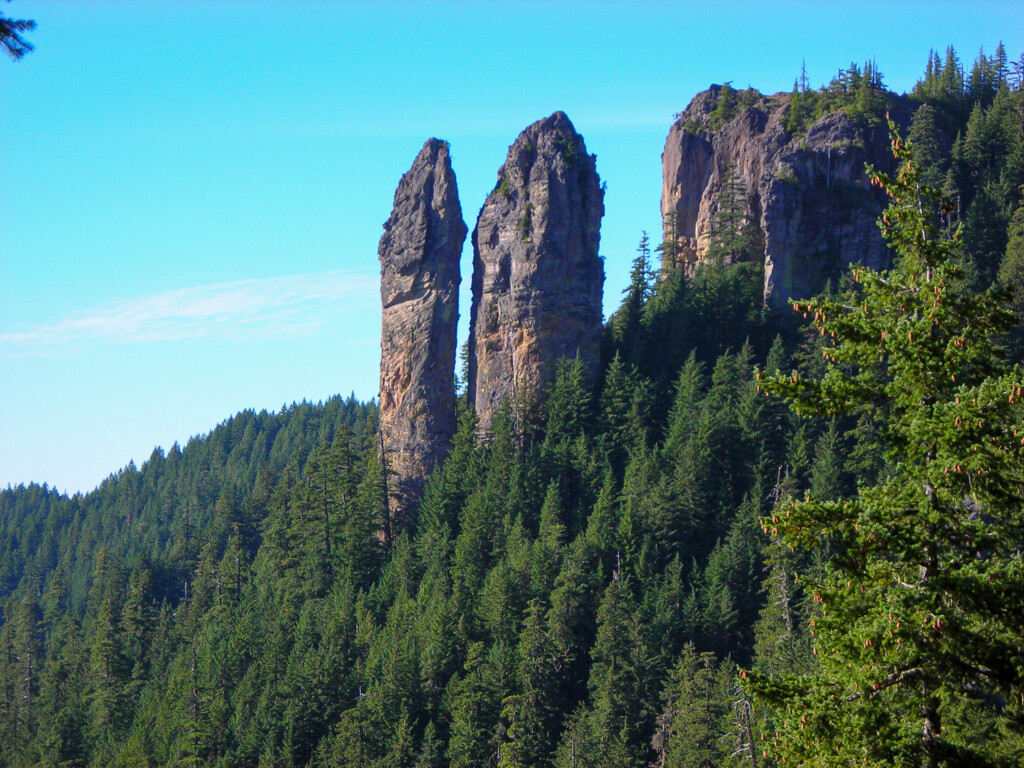
The Rabbit Ears. The north one is on the left (Oct. 2006).
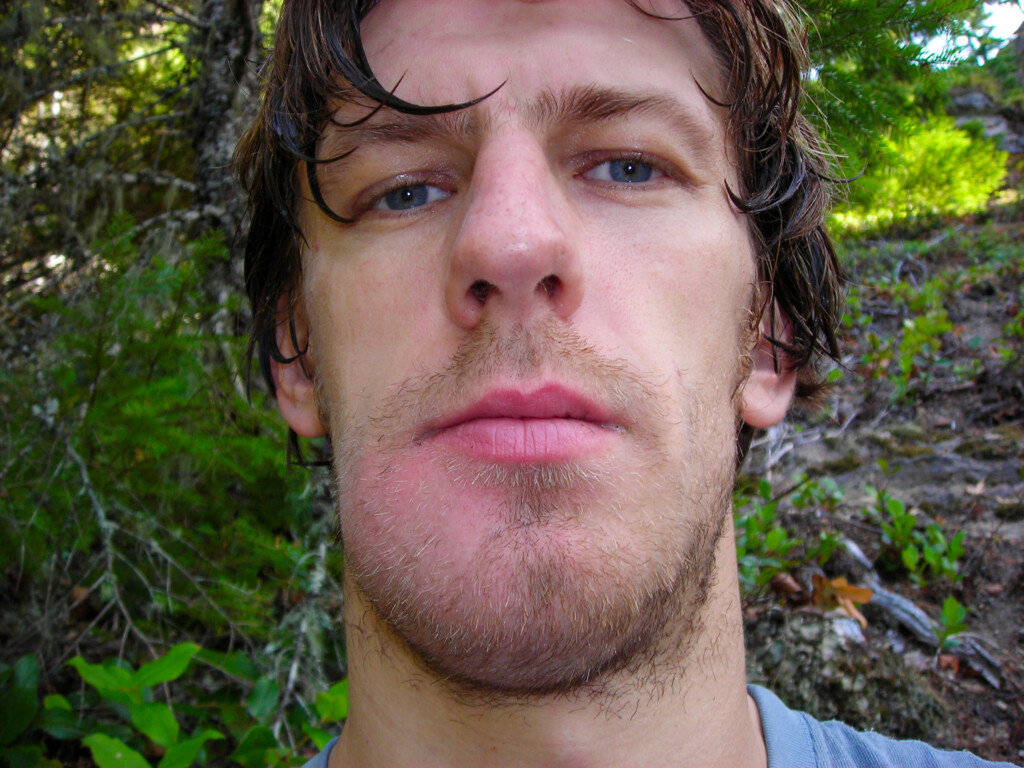
A gift from a pissed off yellow jacket (Oct. 2006).
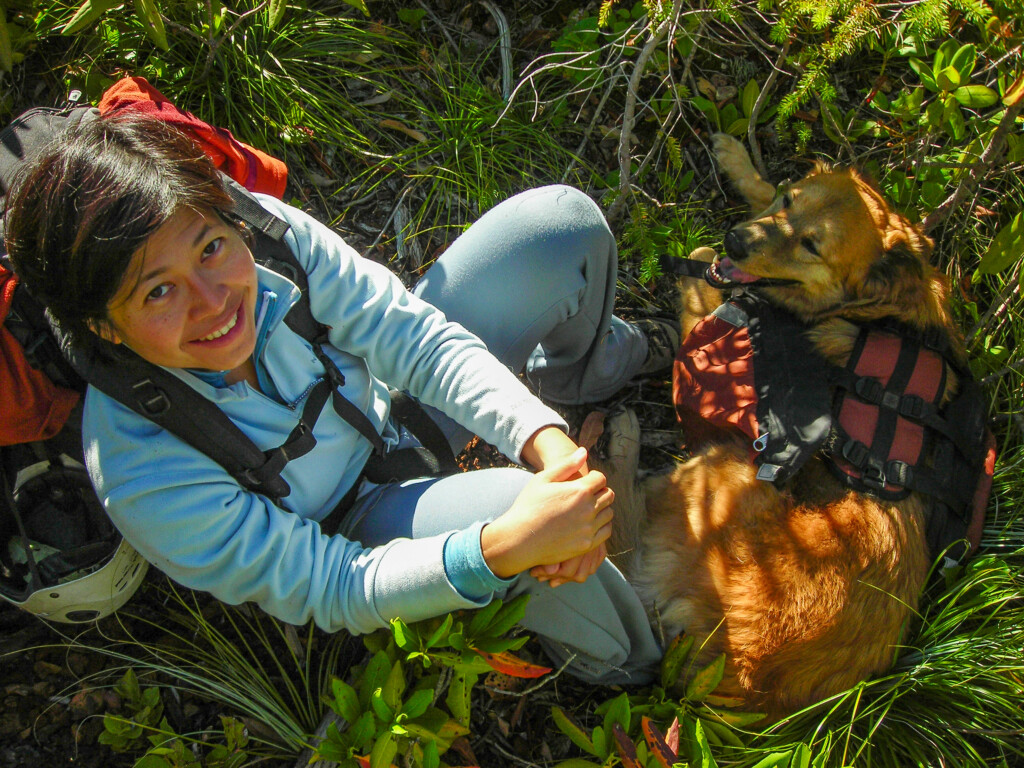
More of Shirley and Blondie in the Menagerie Wilderness (Oct. 2006).
July 2007
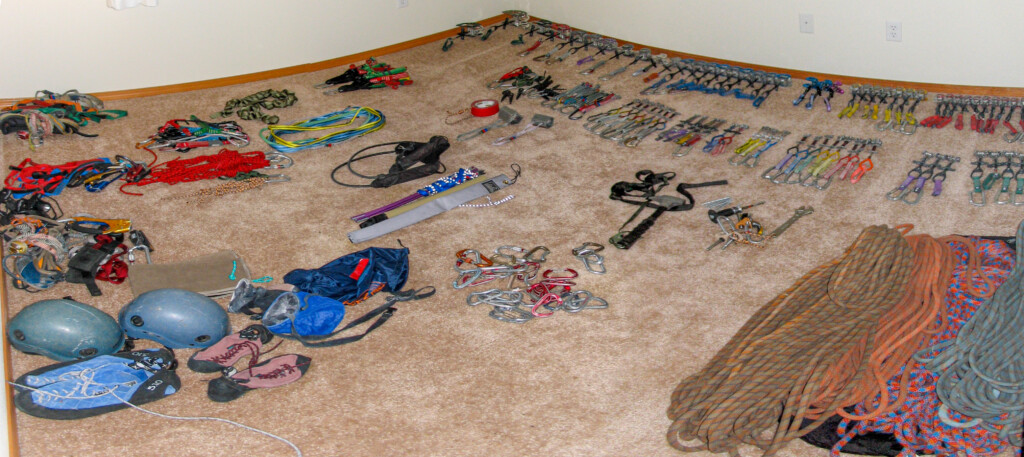
Sorting gear for the Monster climb (Aug. 2007).
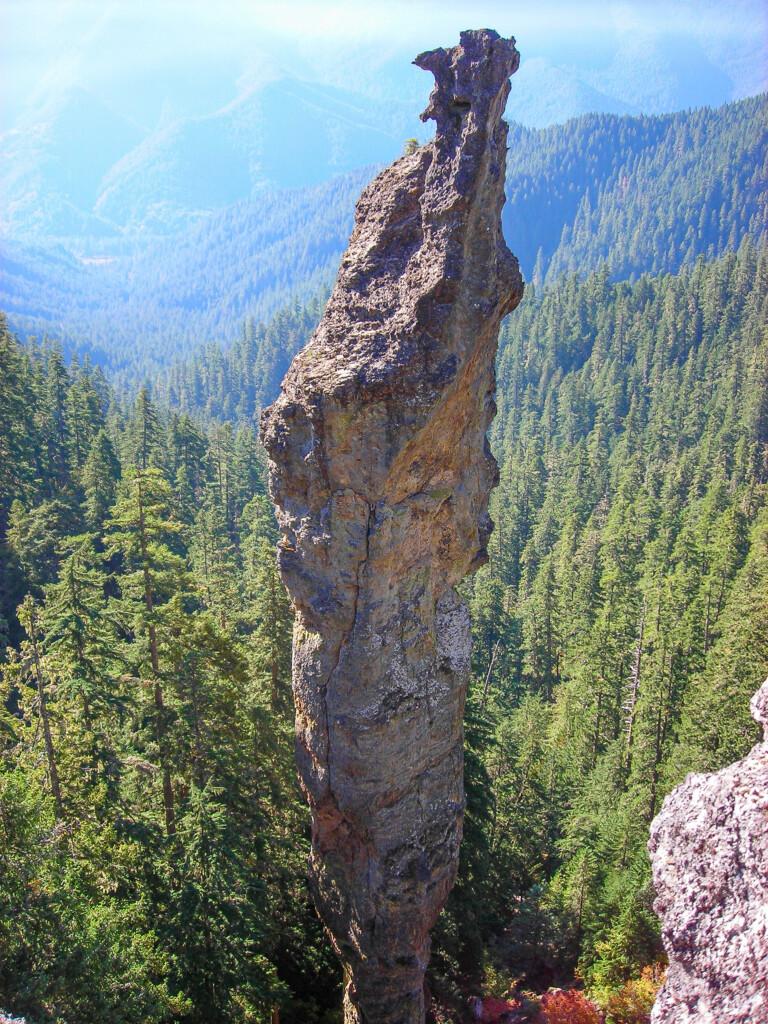
Turkey Monster again (Aug. 2007).

Starting the lead of pitch 1 of the Dod Route (Aug. 2007).
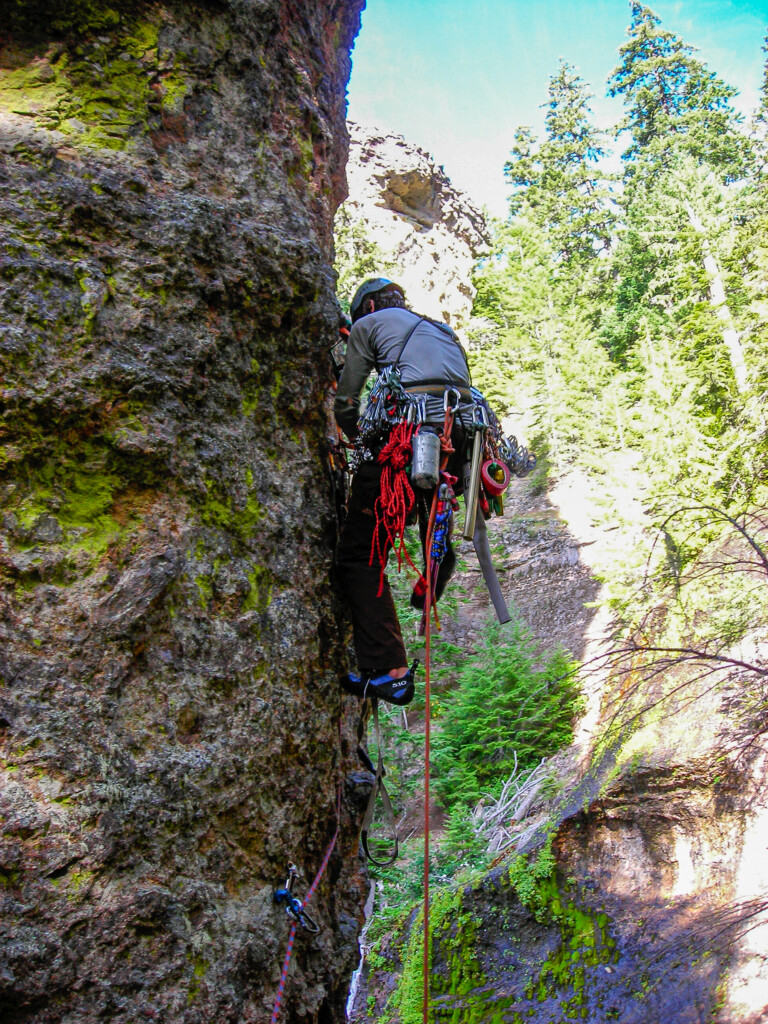
Pitch 1 (Aug. 2007).
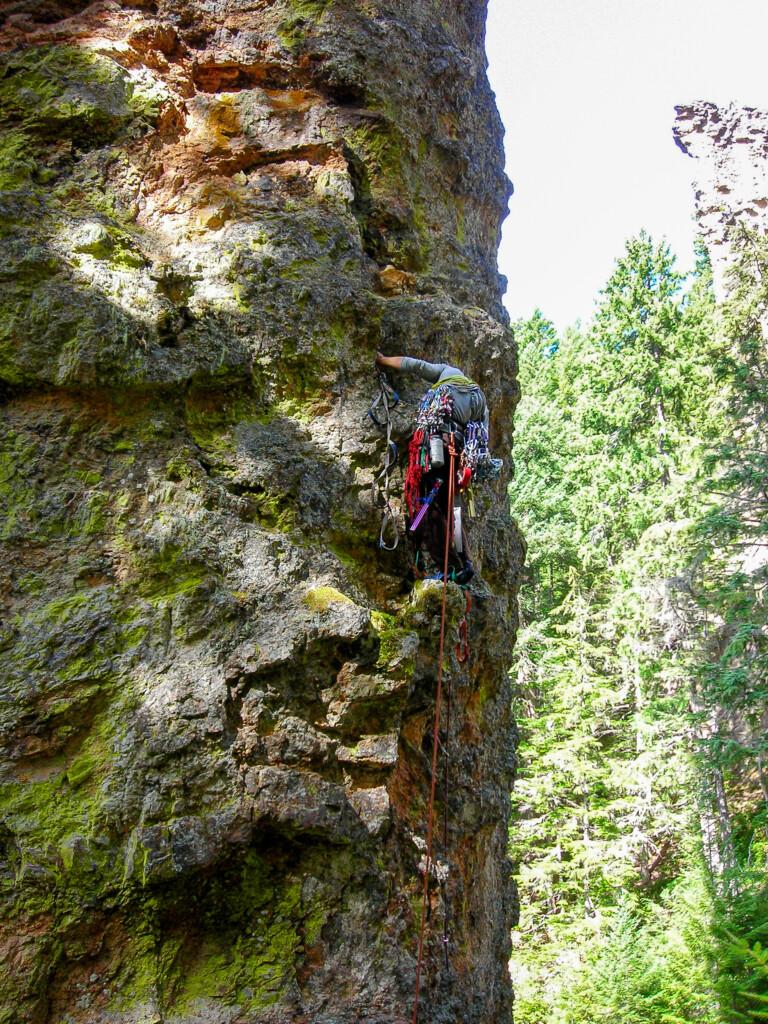
Making progress on pitch 1. Photo by our friend, Pat (Aug. 2007).
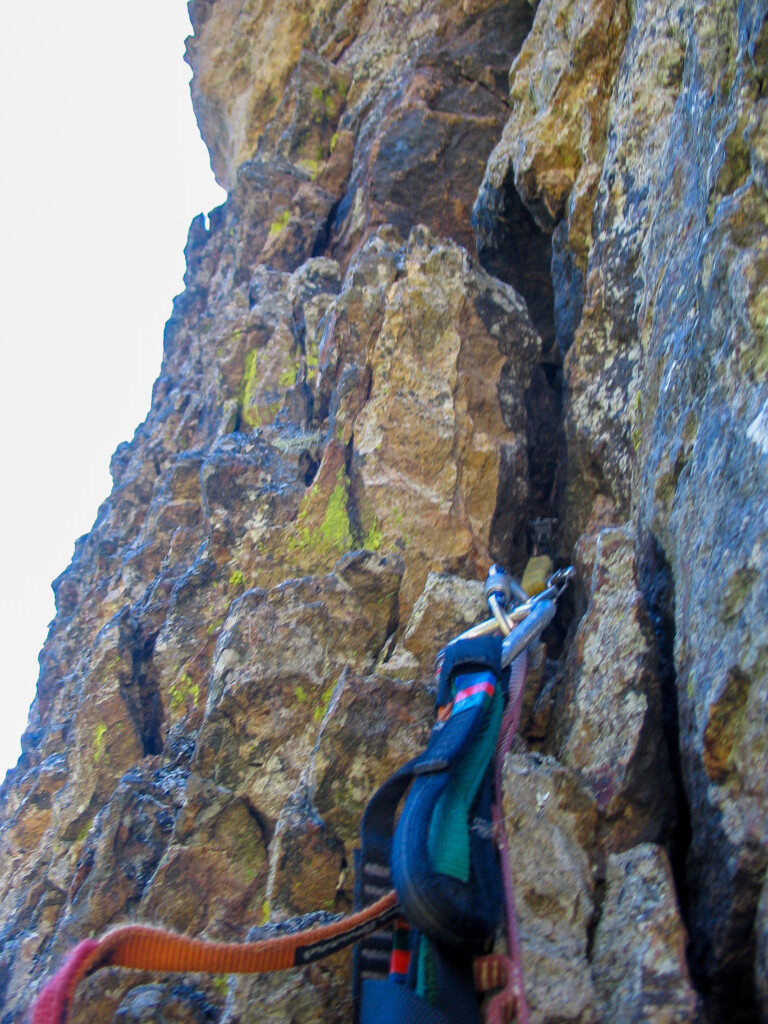
Solid enough I guess (Aug. 2007).
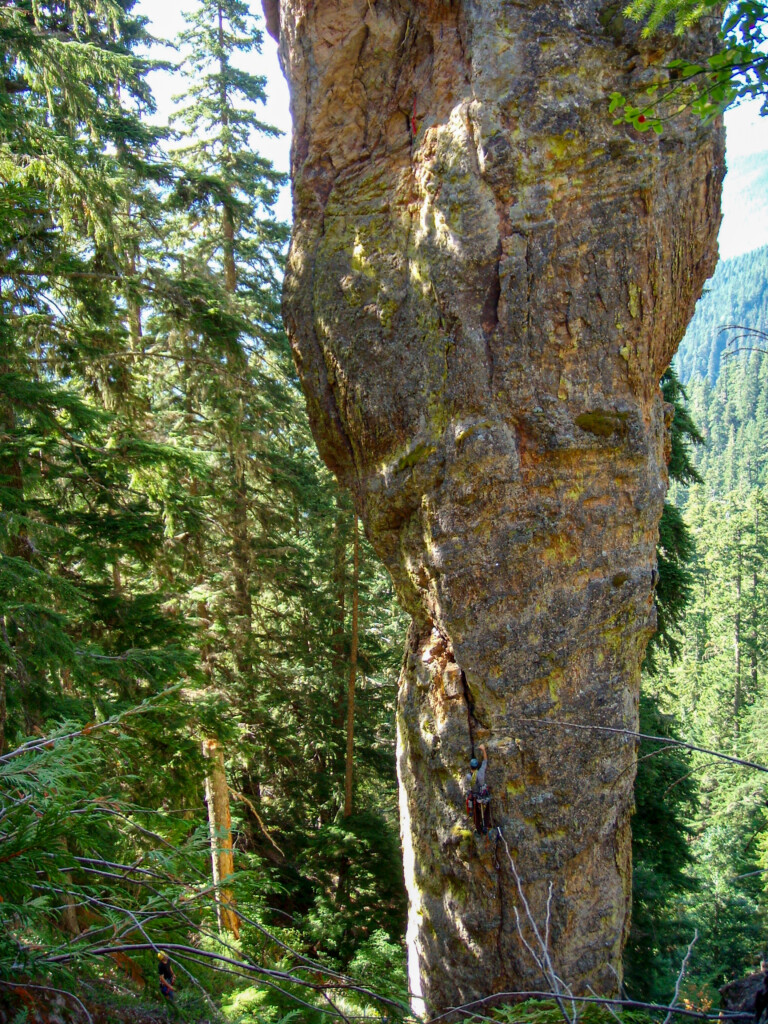
Leading pitch 1. Photo by our time lapse camera (Aug. 2007).

More of pitch 1 lead (Aug. 2007).
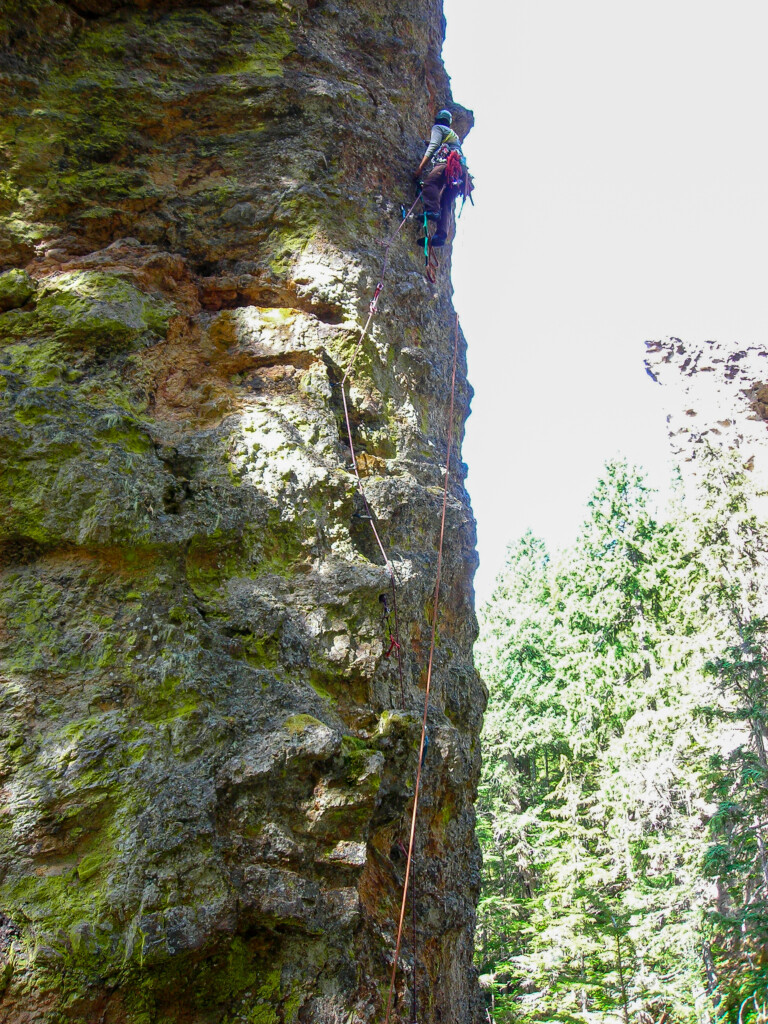
Leading pitch 1. Photo by our friend, Pat (Aug. 2007).
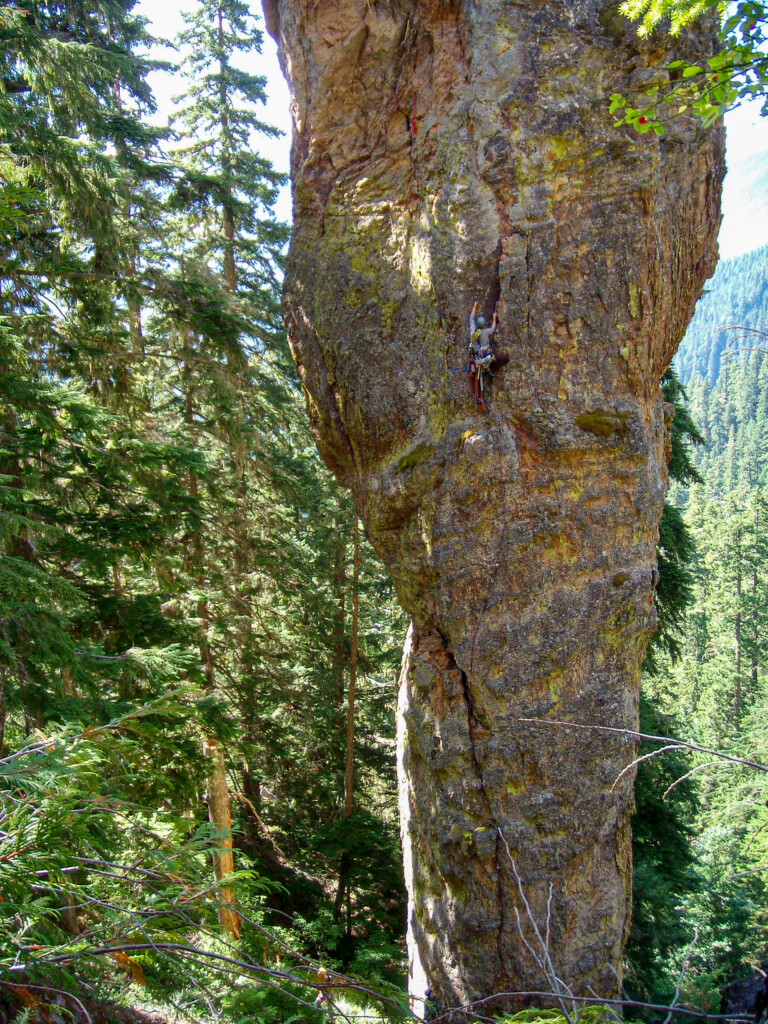
Higher on pitch 1 of the Dod Route (Aug. 2007).
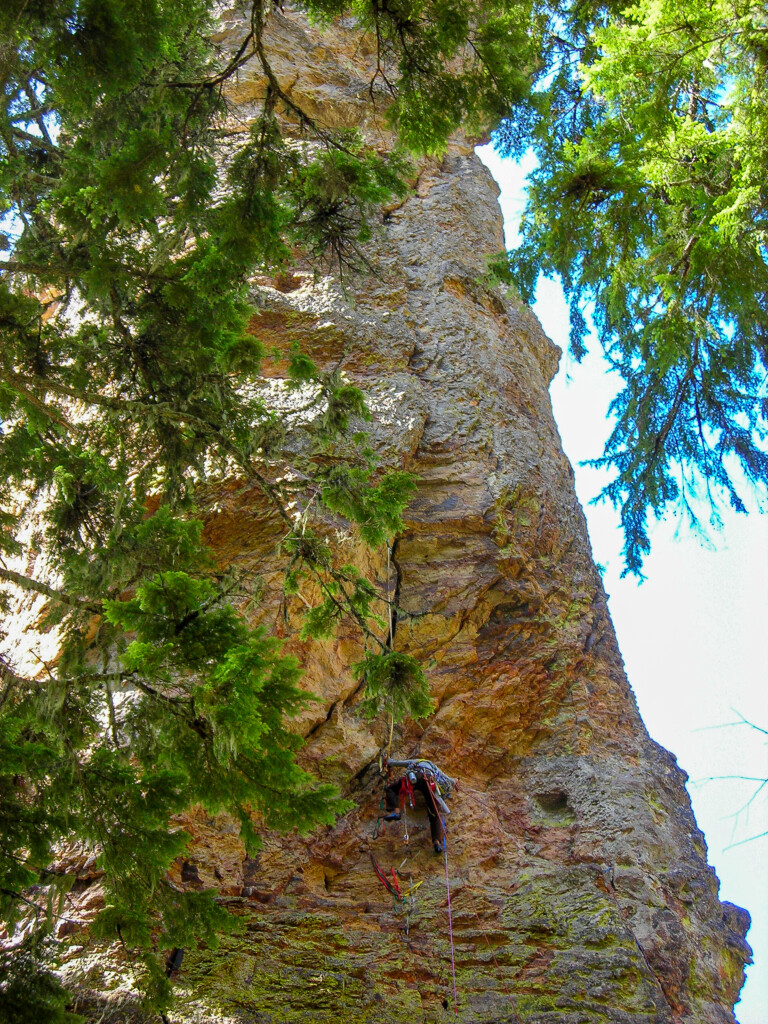
Linking pitches 1 and 2. Photo by Pat (Aug. 2007).
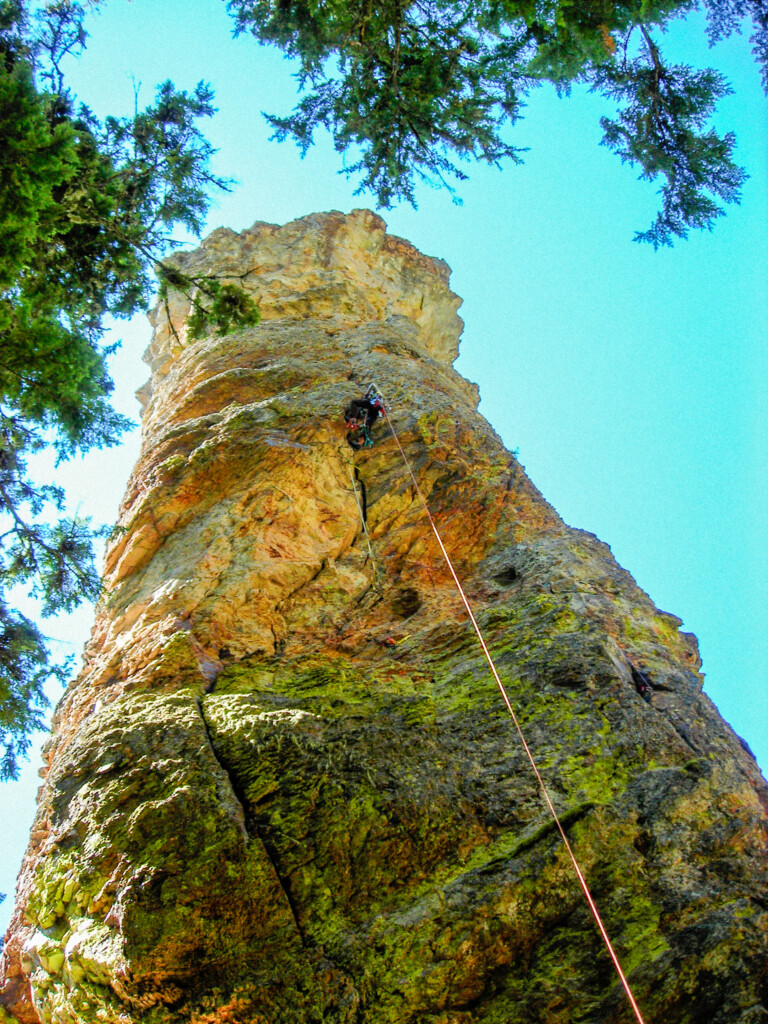
Leading pitch 2. Photo by Pat (Aug. 2007).
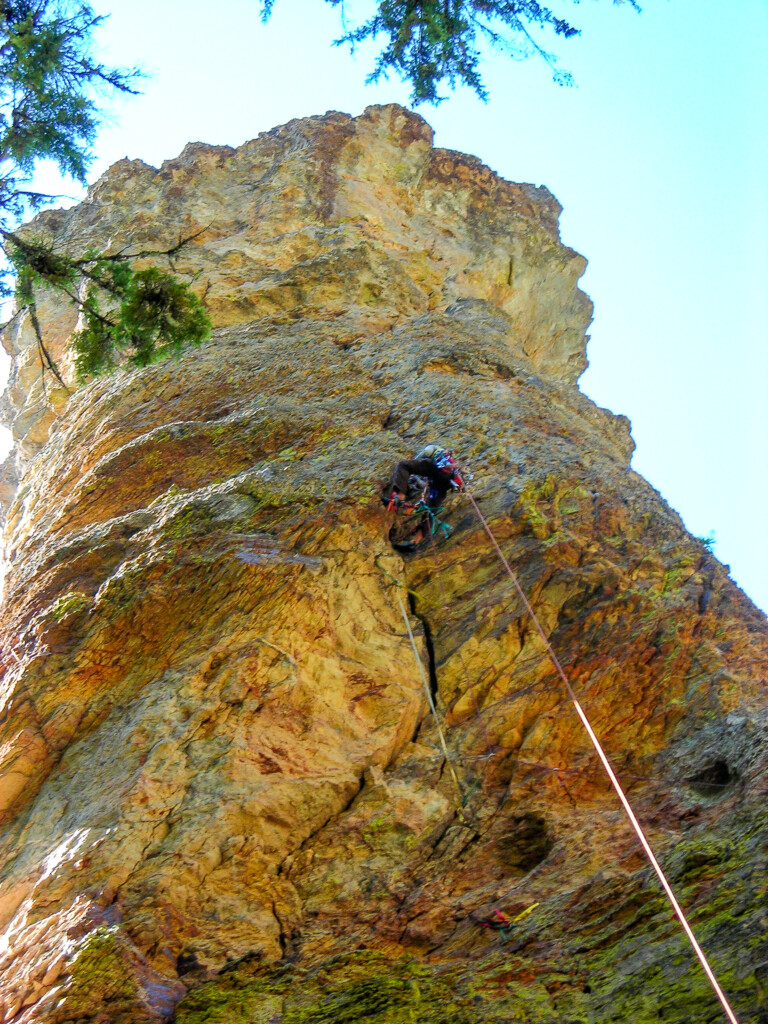
Pitch 2 (Aug. 2007).
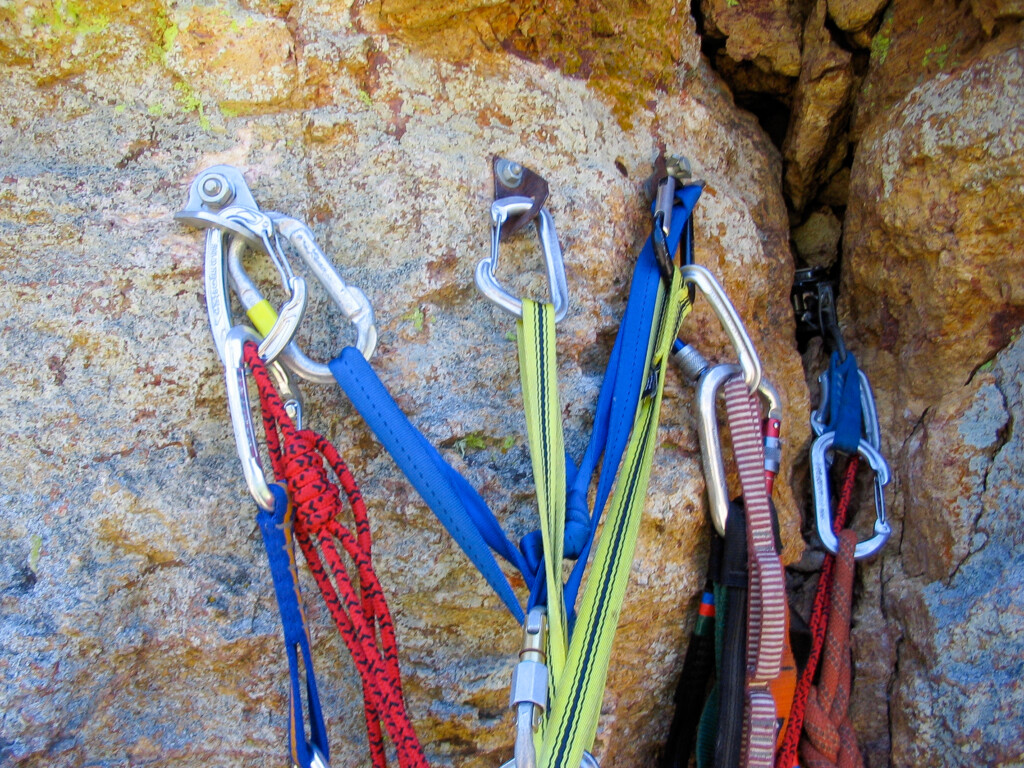
Pitch 2 anchor (our pitch 1) on the Dod Route on Turkey Monster (Aug. 2007).
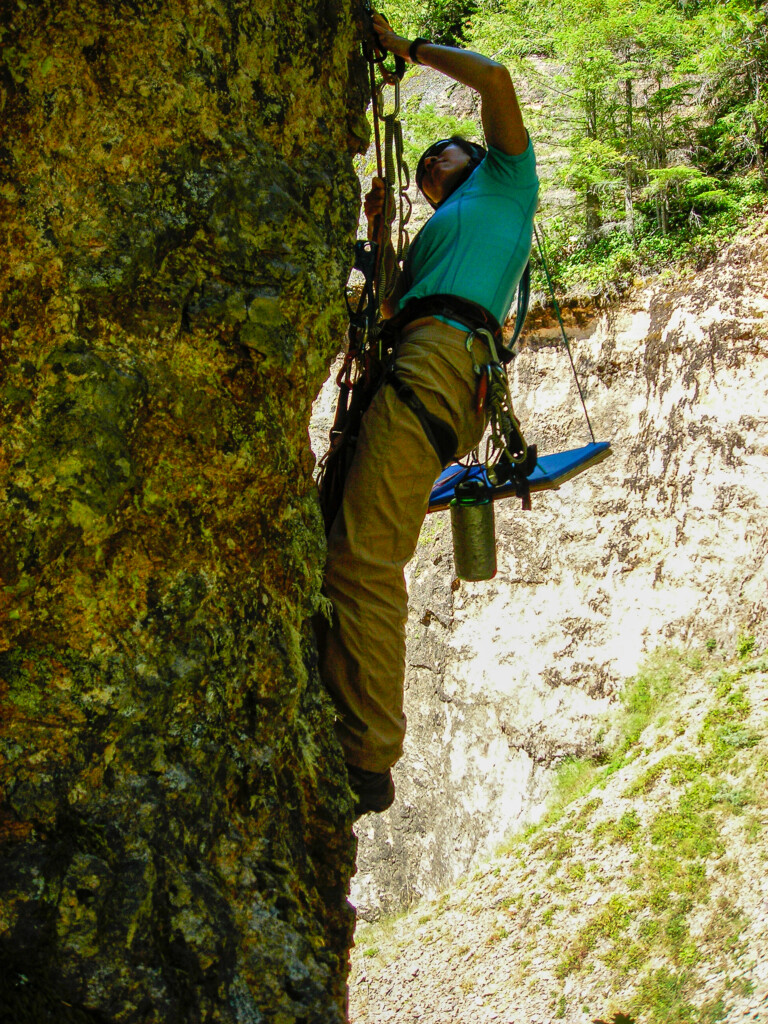
Shirley starting up. Photo by Pat (Aug. 2007).
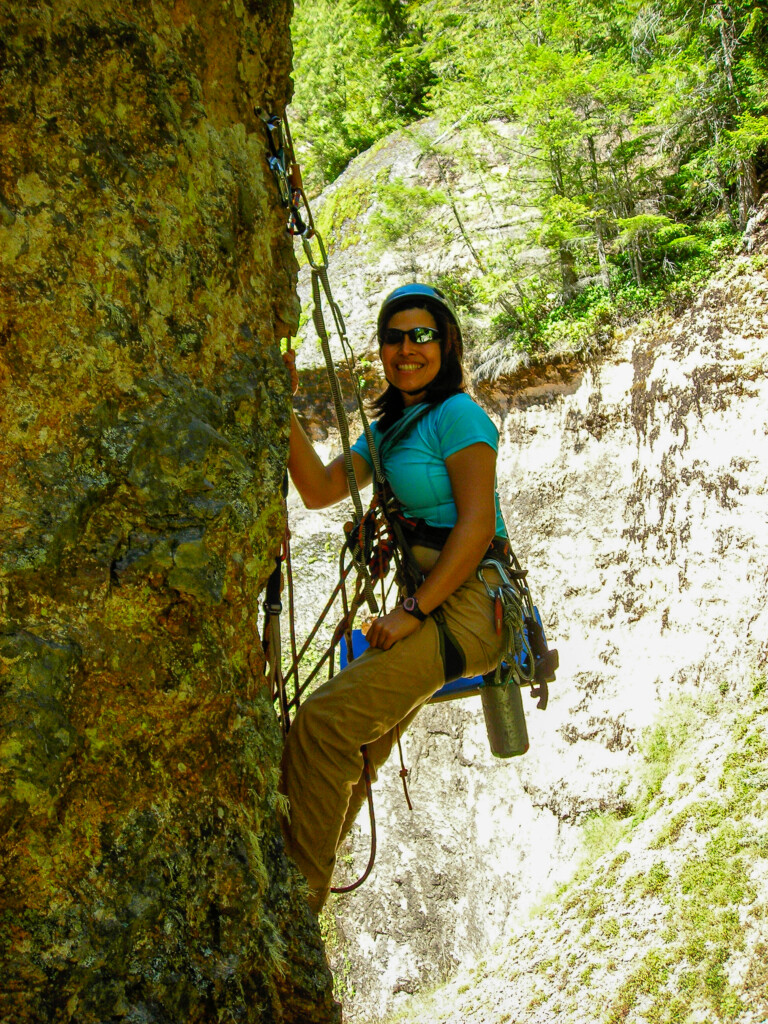
Shirley jugging pitch 1. Photo by Pat (Aug. 2007).
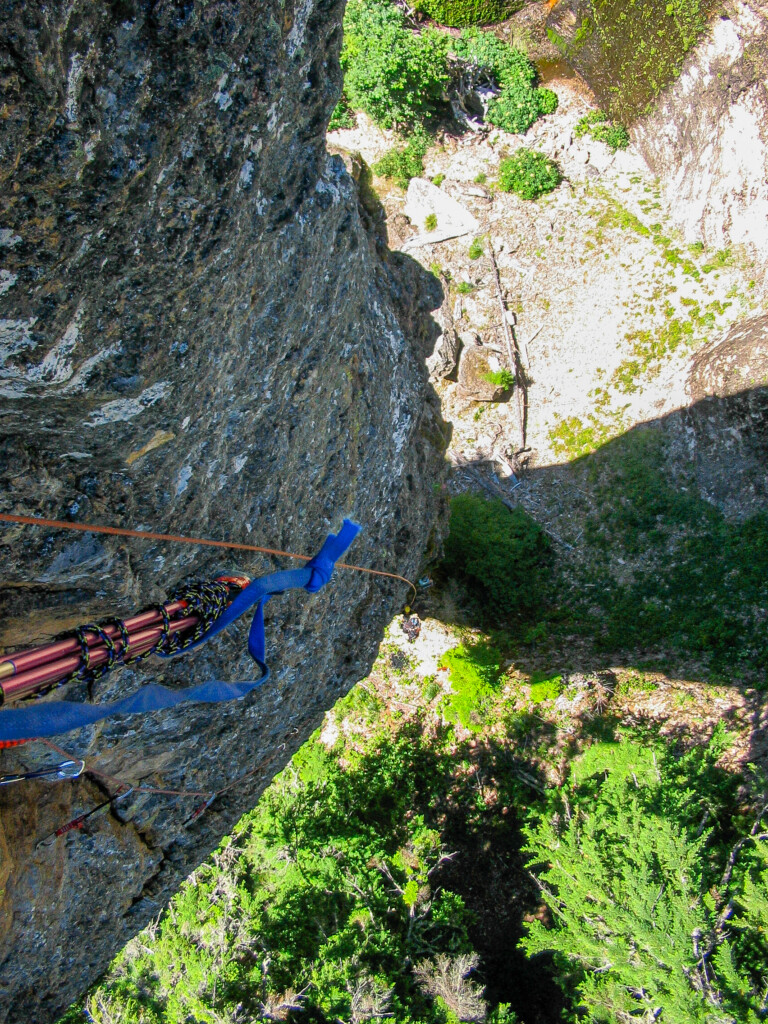
Shirley starting the ascent and Pat waiting a bit (Aug. 2007).
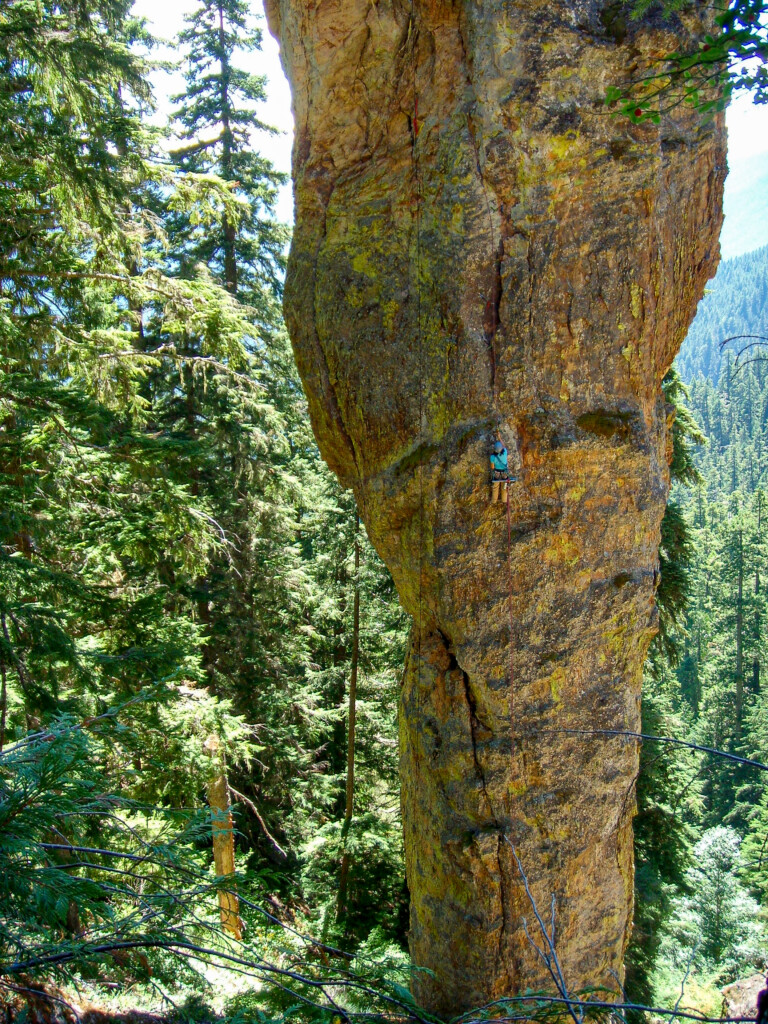
Shirley jummaring (Aug. 2007).
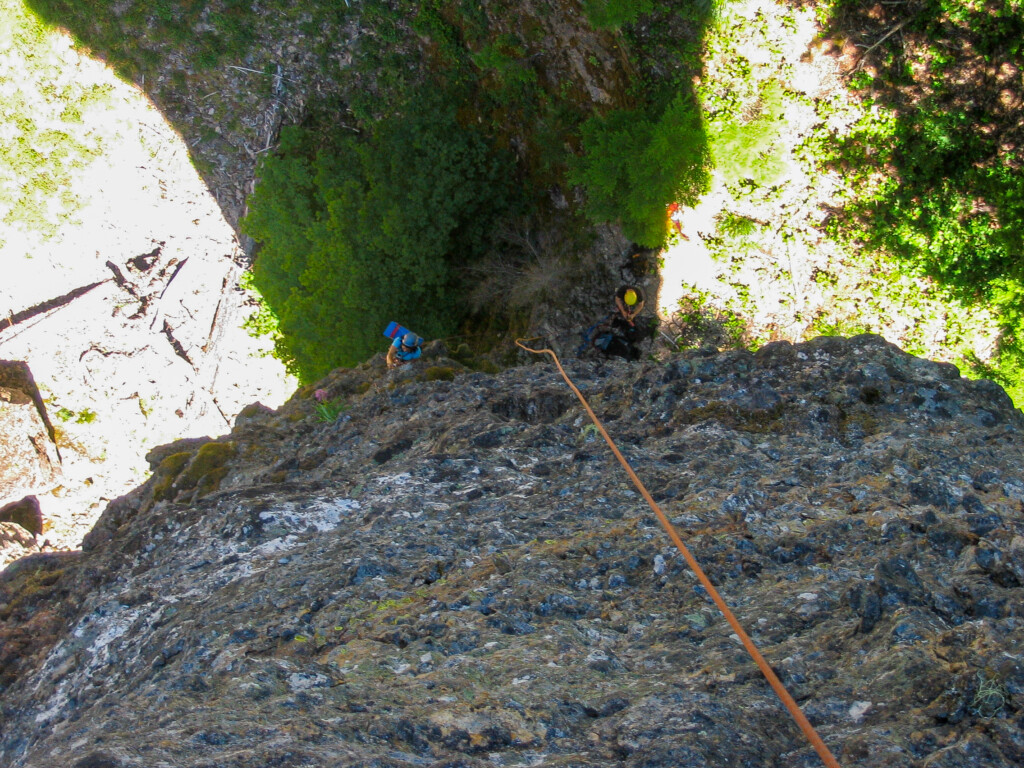
Pat getting ready to start up (Aug. 2007).
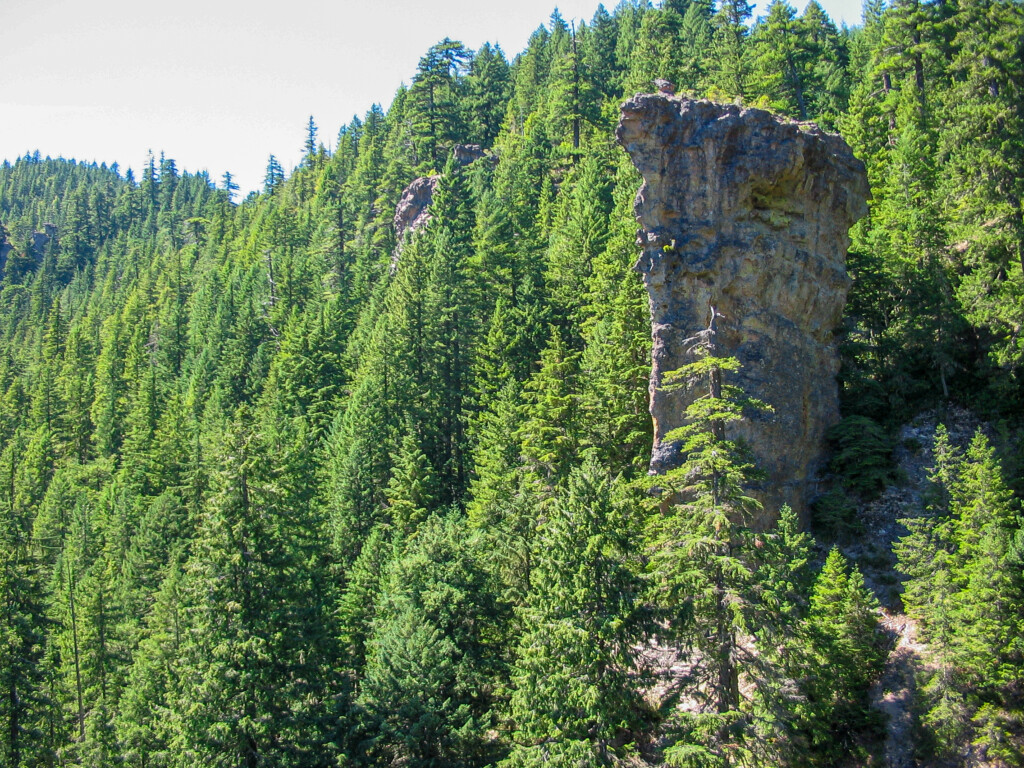
The Beast formation as seen from top of pitch 2 (Aug. 2007).
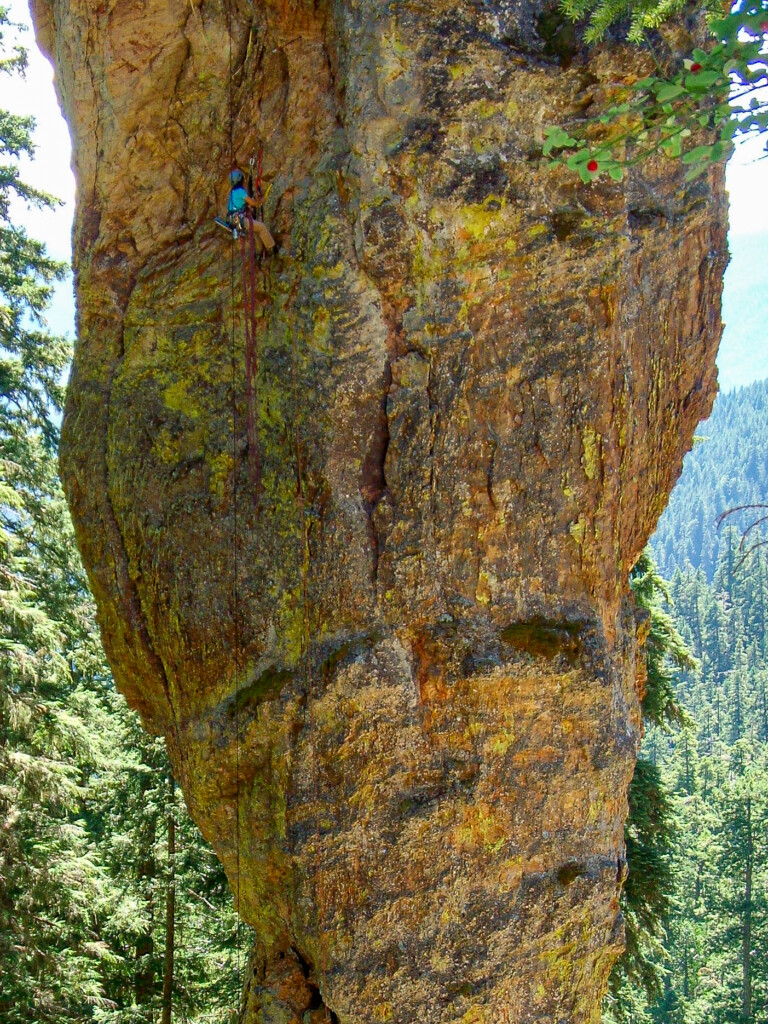
Shirley making progress (Aug. 2007).
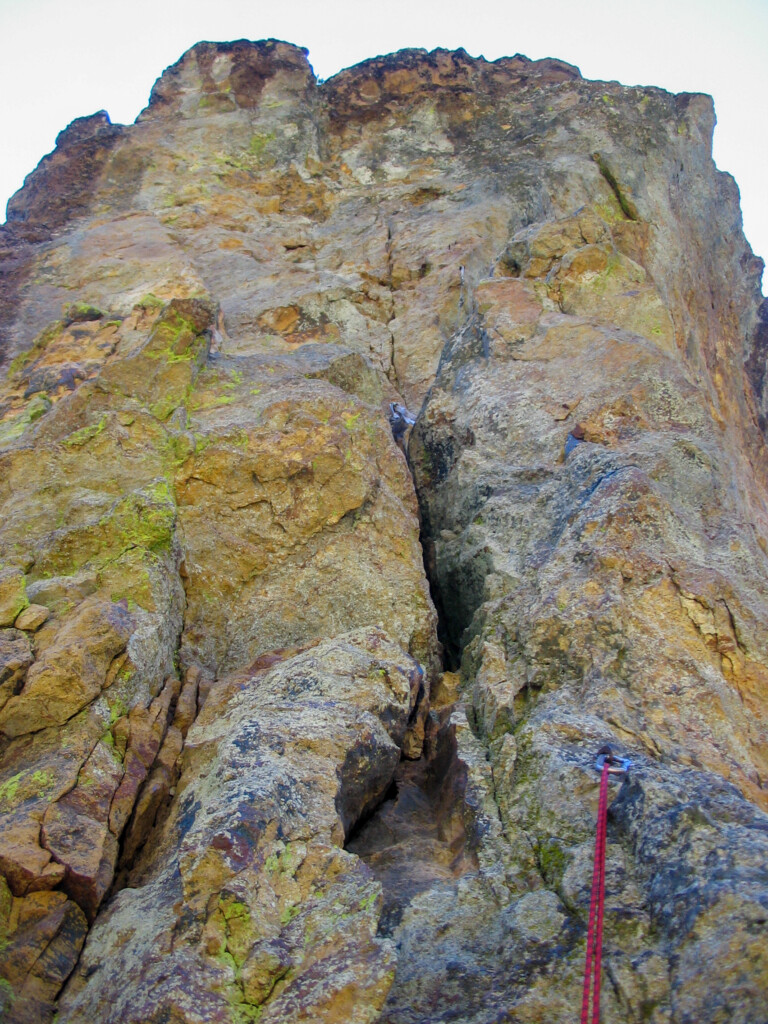
Looking up at the third pitch of the Dod Route (Aug. 2007).
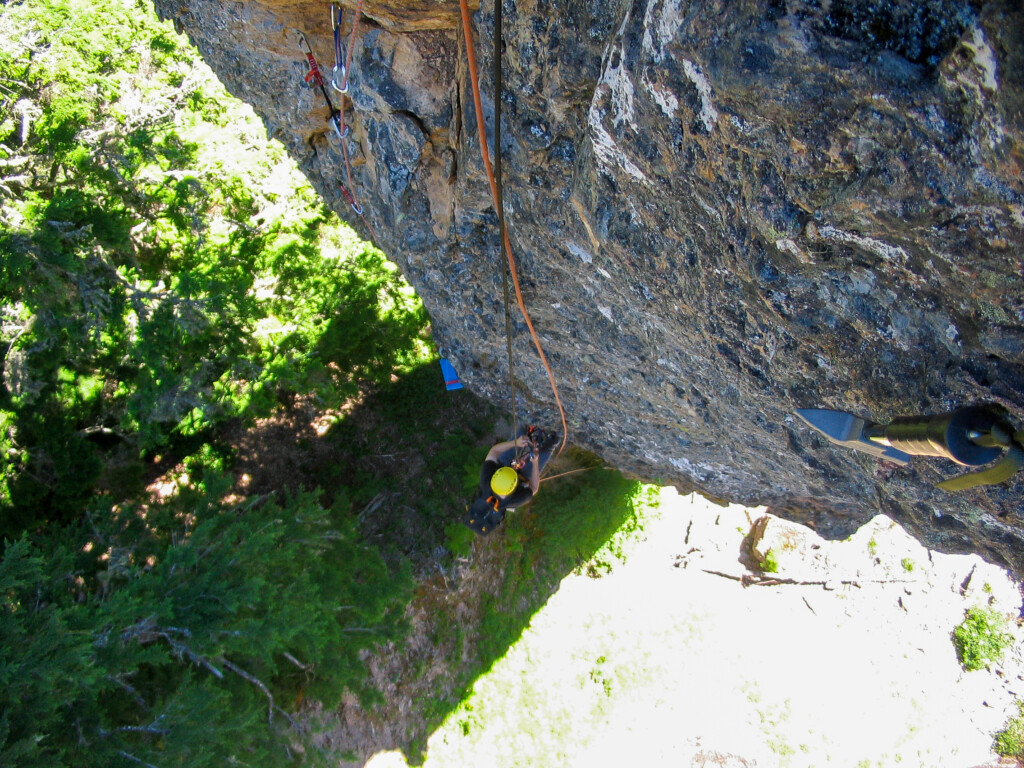
Pat making progress (Aug. 2007).
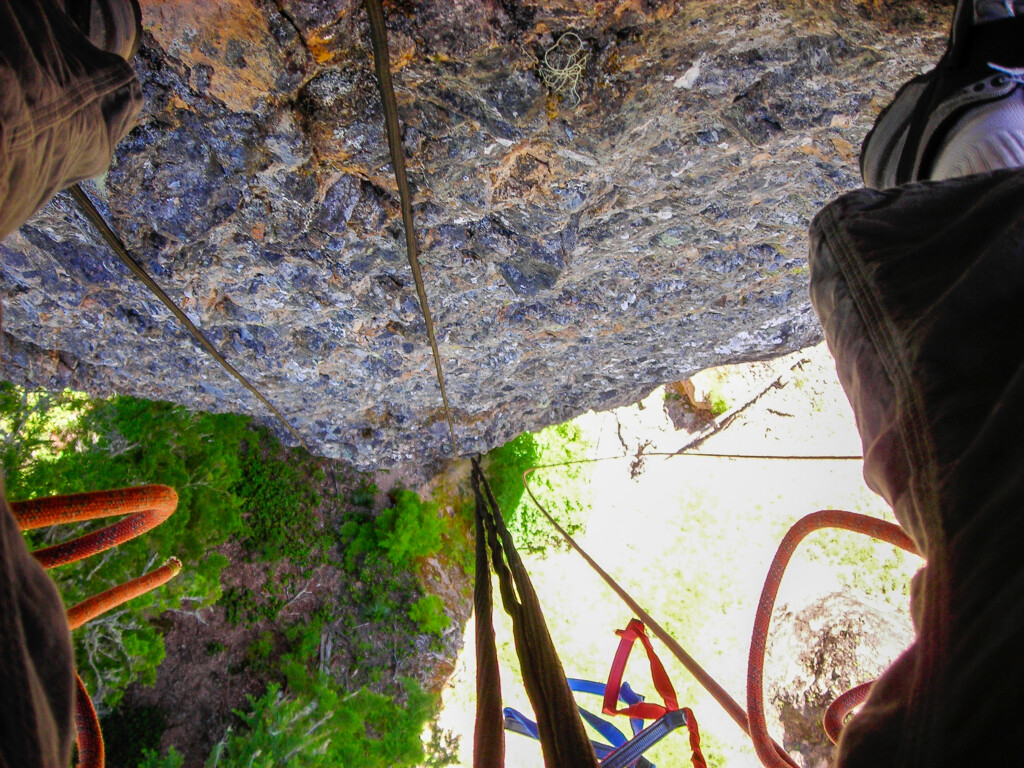
Pat’s downward view during the jummar (Aug. 2007).
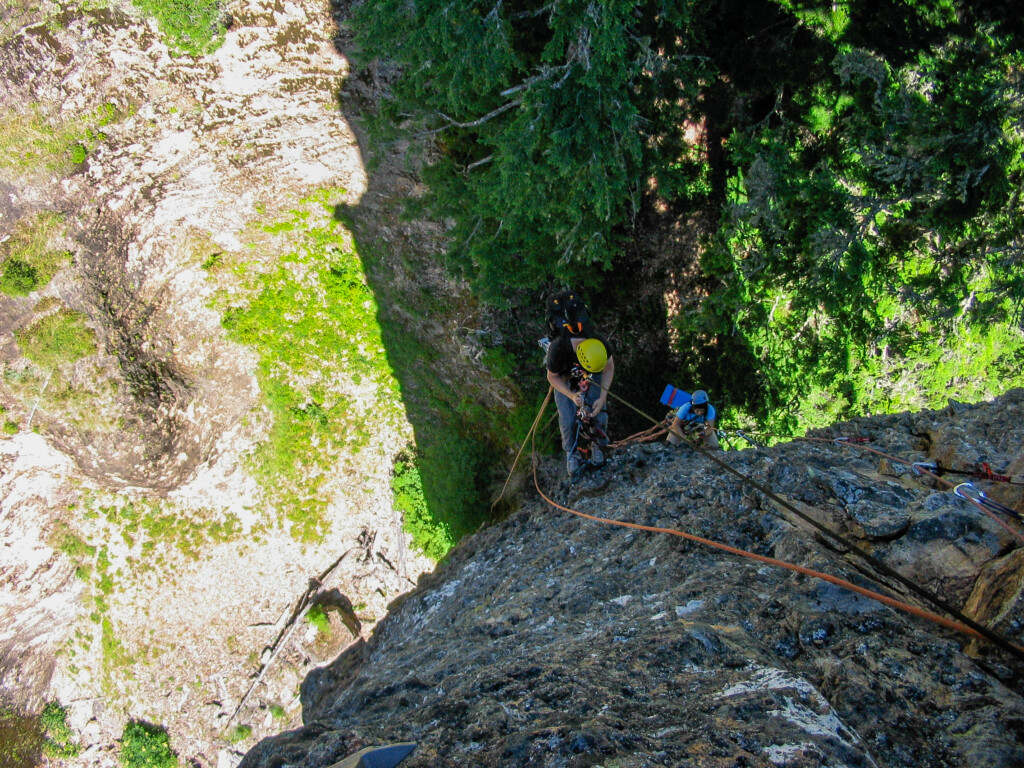
Pat and Shirley jummaring (Aug. 2007).
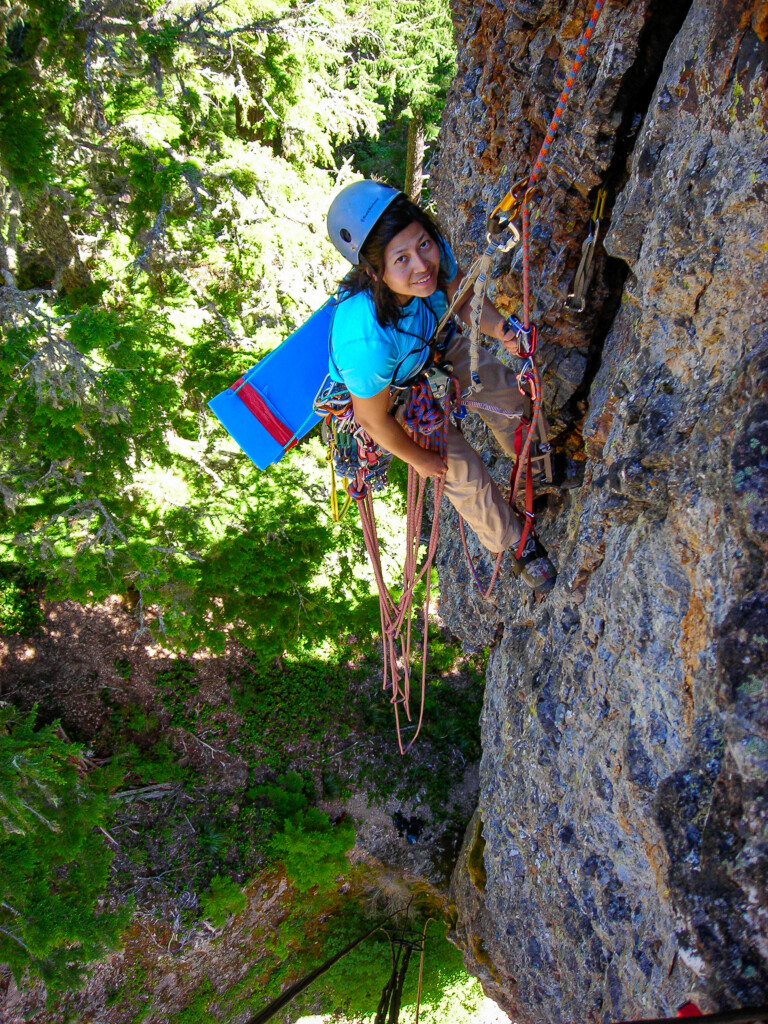
Shirley jugging P2 of Dod Route (our P1) on Turkey Monster. Photo taken by Pat who was jugging next door (Aug. 2007).
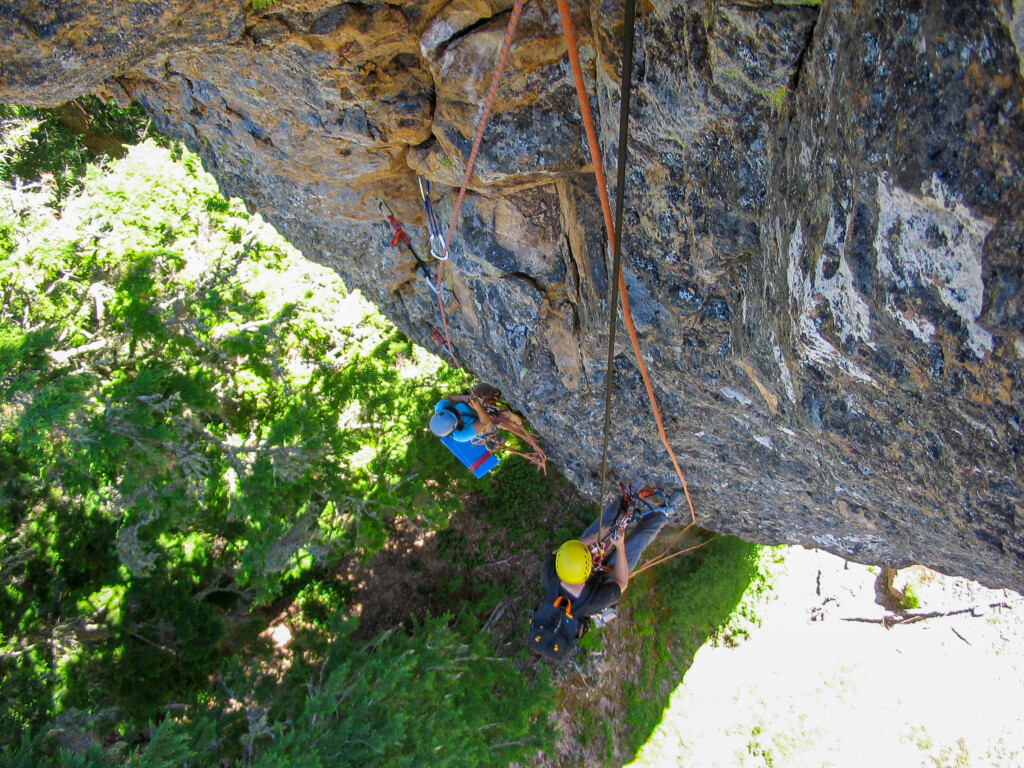
Shirley and Pat jugging (Aug. 2007).
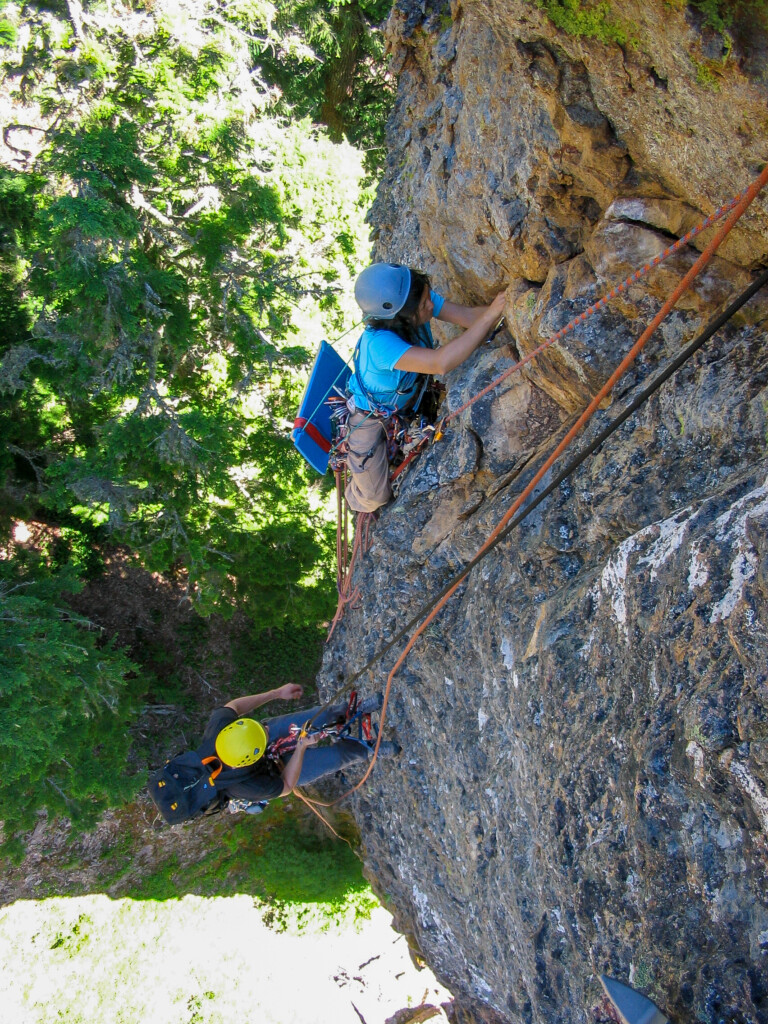
Shirley cleaning pitch 2. Pat was jugging a straight up fixed rope (Aug. 2007).
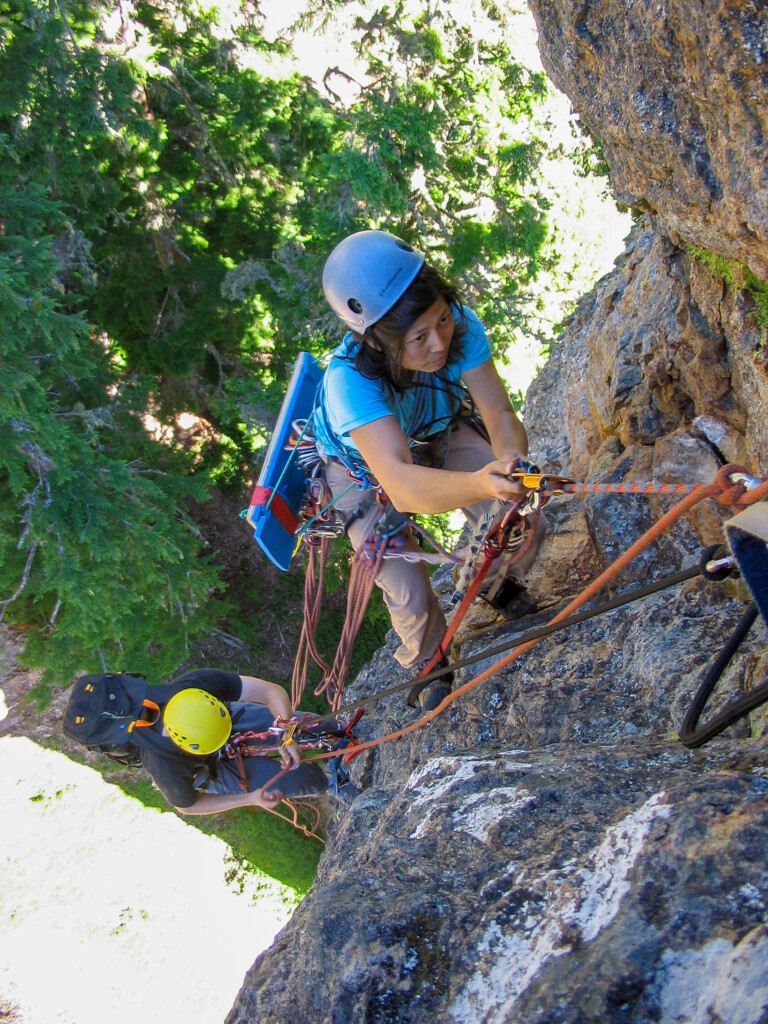
Shirley arriving at the belay (Aug. 2007).
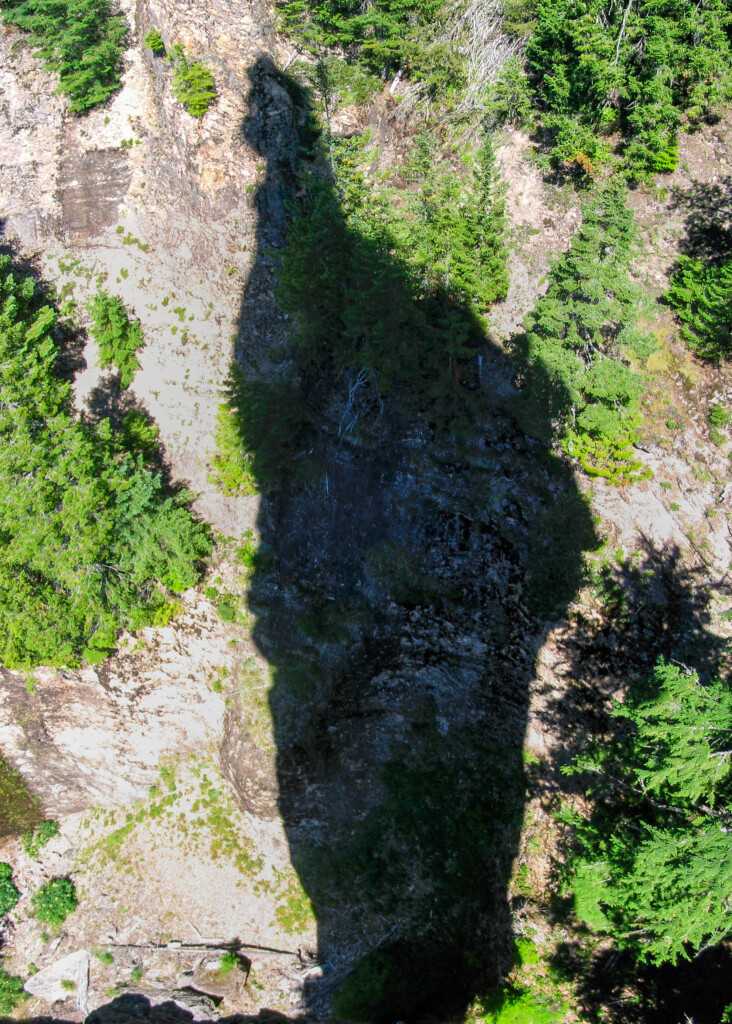
View down from top of P2 (our P1) of Dod Route on Turkey Monster (August 2007).
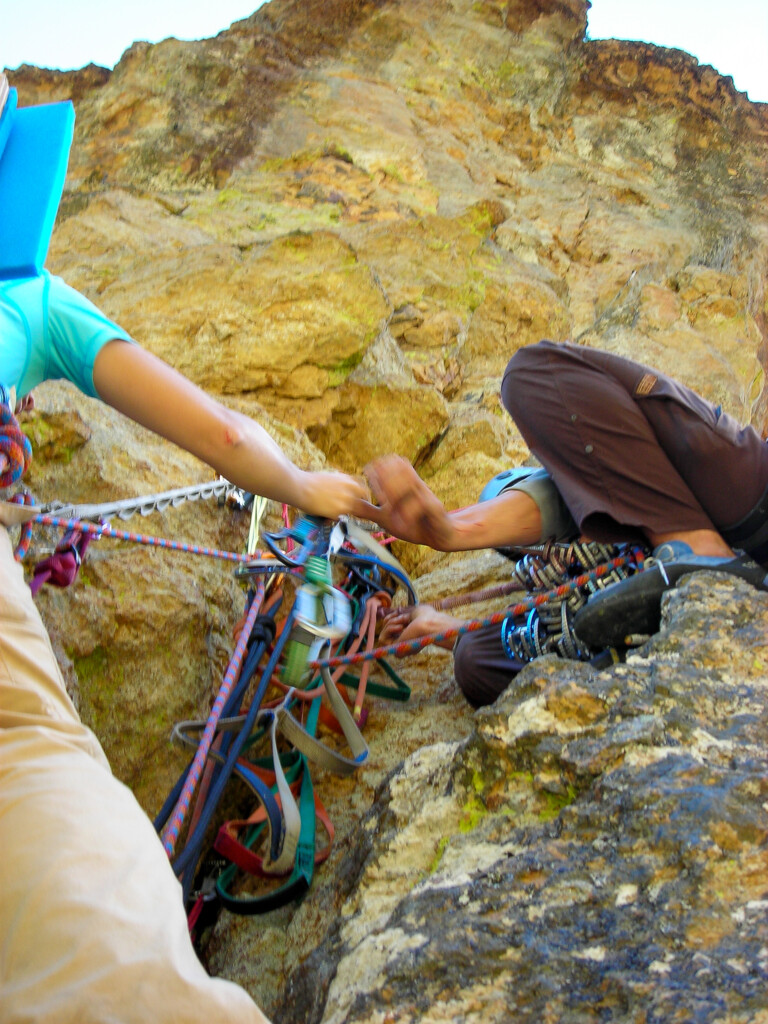
Gear swap. Photo by Pat (Aug. 2007).
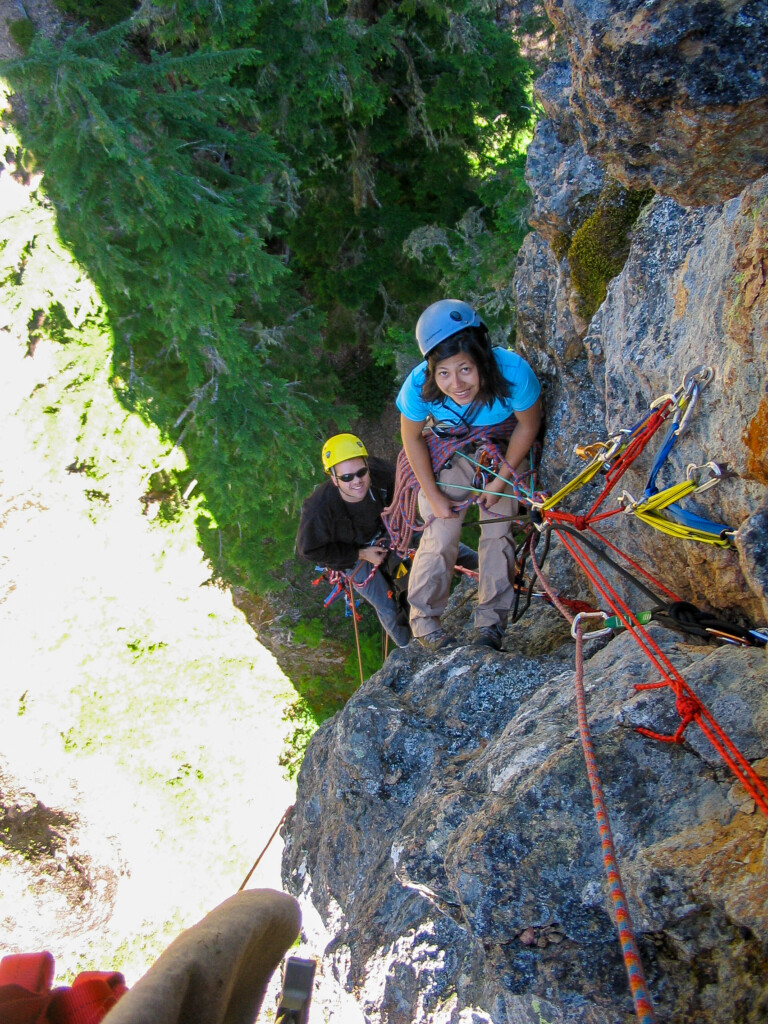
Shirley and Pat hanging out atop pitch 2 of the Dod Route (Aug. 2007).
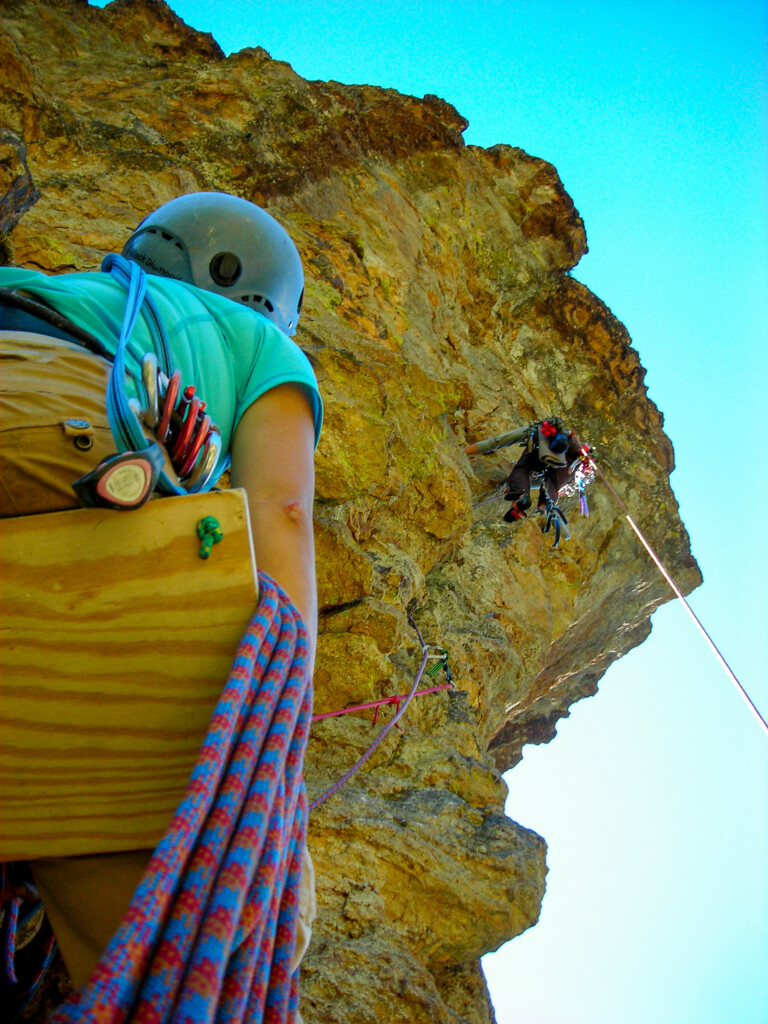
Leading the severely overhanging headwall pitch (pitch 3, our pitch 2) on Dod Route on Turkey Monster. Photo credit: Pat C. (August 2007).

More views down towards Shirley and Pat from the lead of pitch 3 (Aug. 2007).
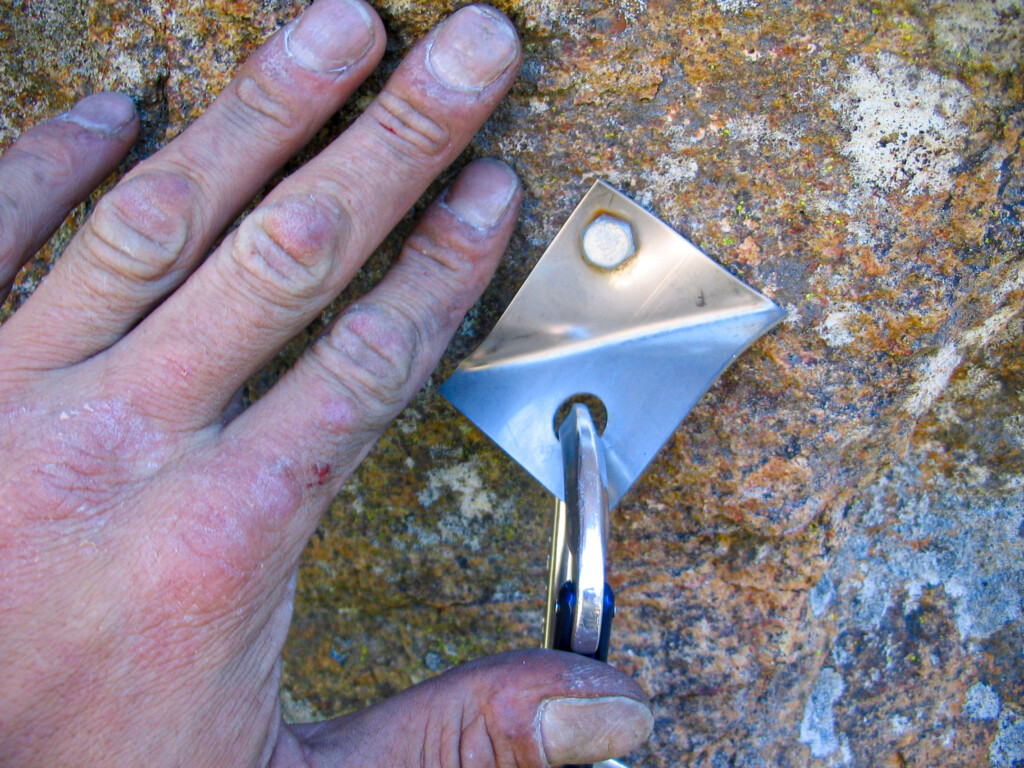
Pitch 3 bolt ladder (as good as they come) likely courtesy of FA party from late 60’s (Aug. 2007).
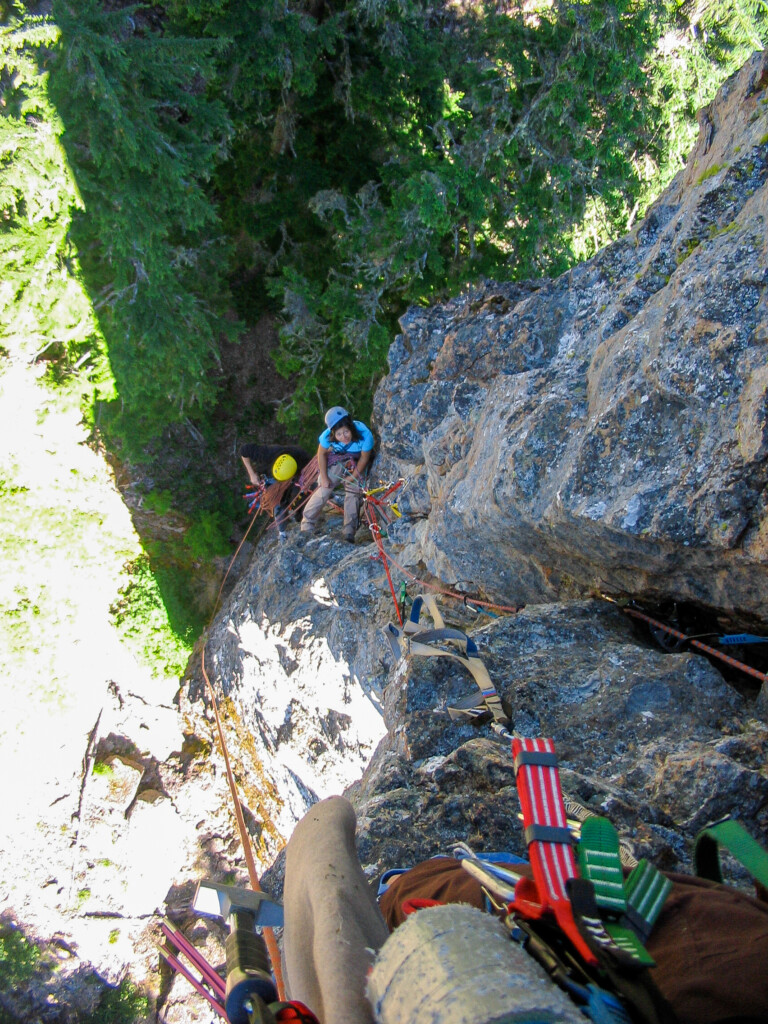
Views down from the lead of pitch 3 (Aug. 2007).

More pitch 3 bolt ladder goodies (Aug. 2007).
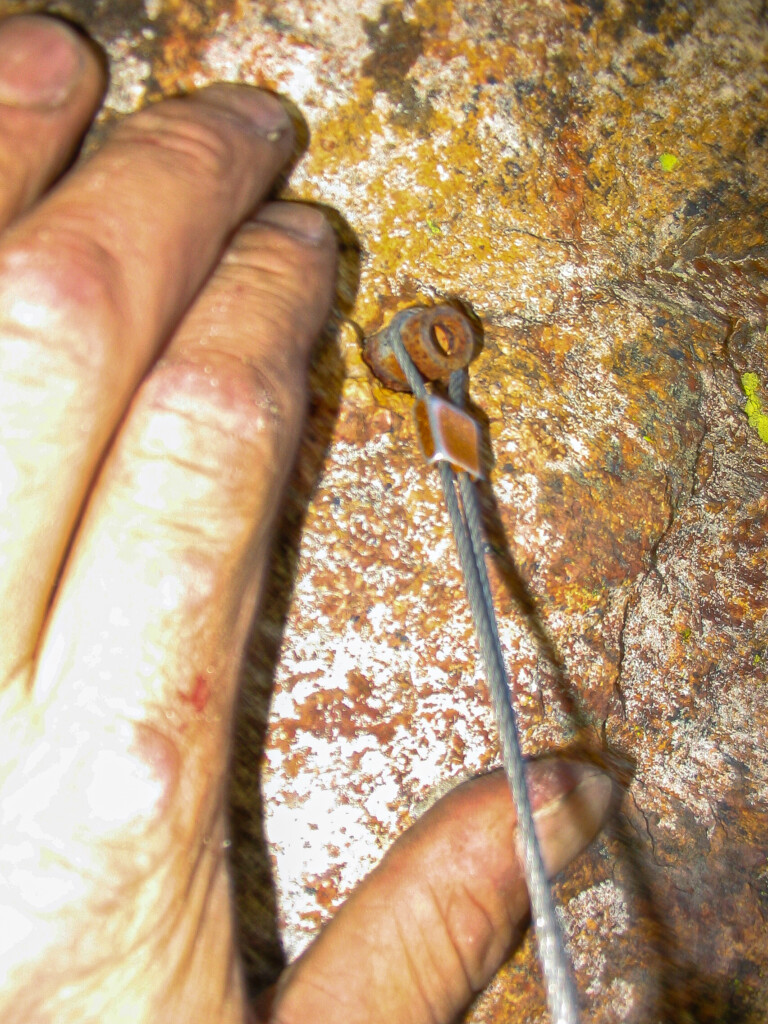
A member of the bolt ladder on pitch 3 of Dod Route on Turkey Monster. Don’t slip, don’t slip, don’t slip!!
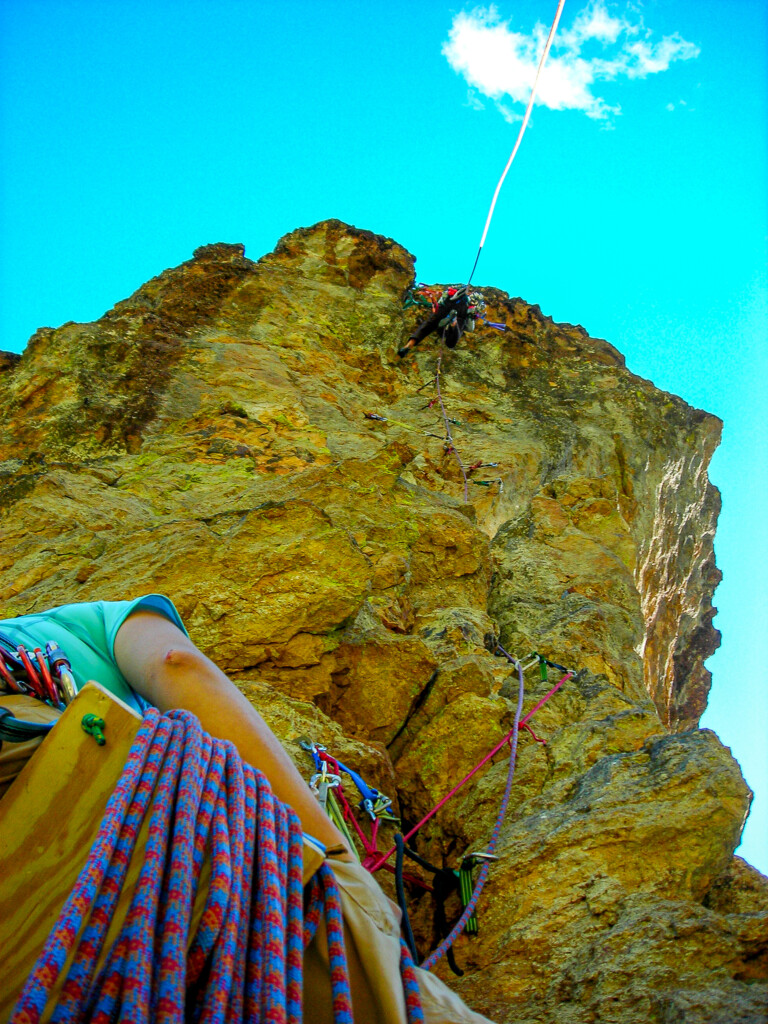
About to pull over the lip of the pitch 3 headwall. Photo by Pat (Aug. 2007).
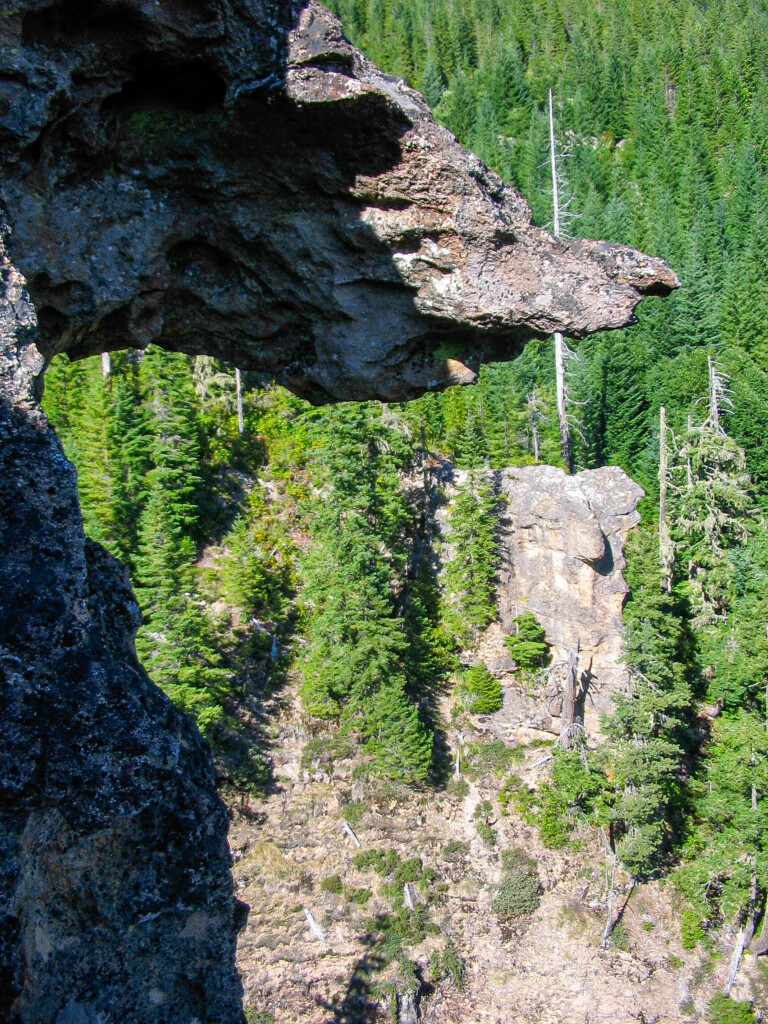
Part of the Monster’s head (Aug. 2007).
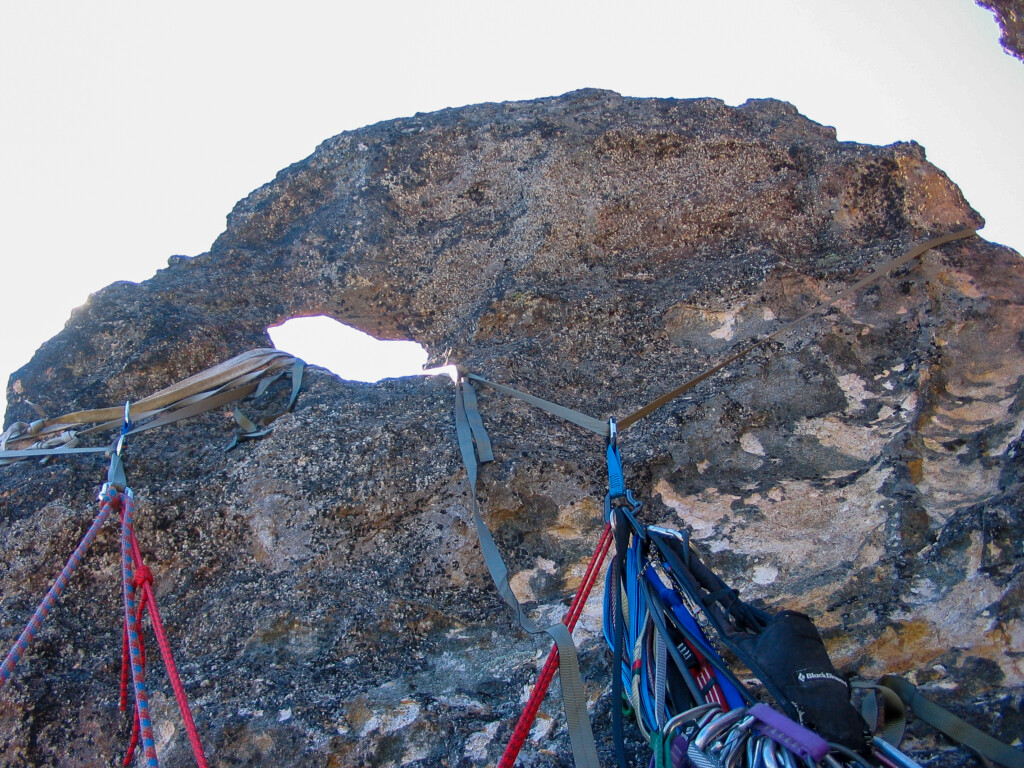
Top anchor (Aug. 2007).
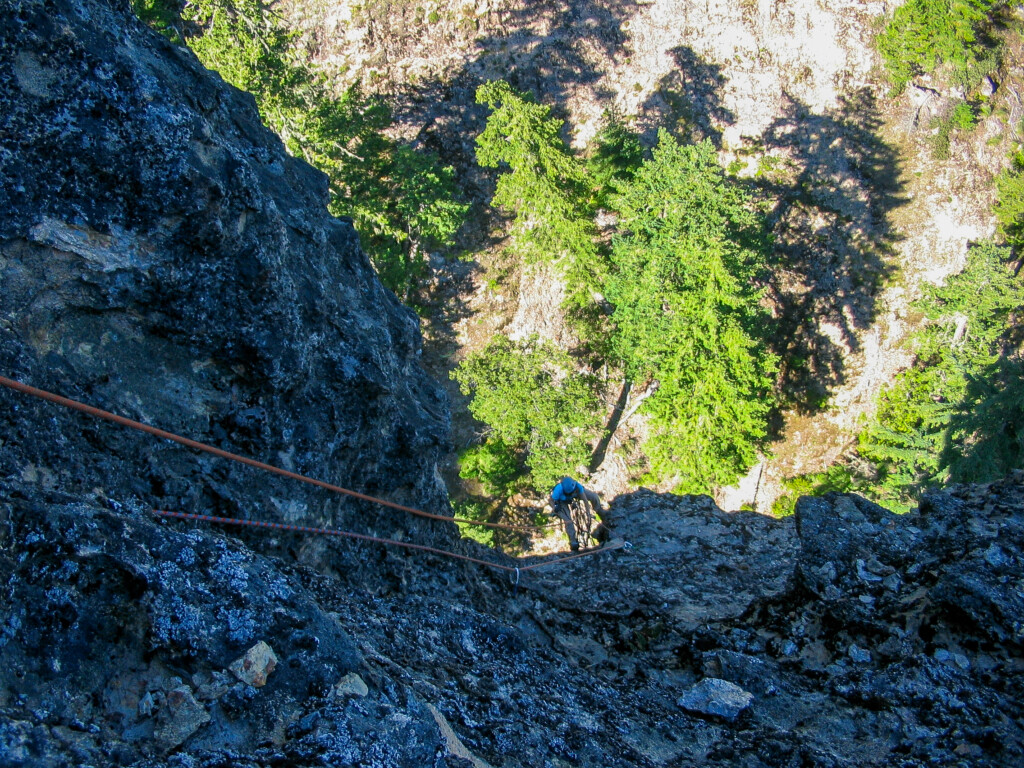
Shirley jugging over the lip of P3 headwall and onto the low 5th class slab that is P4 of Dod Route (August 2007).
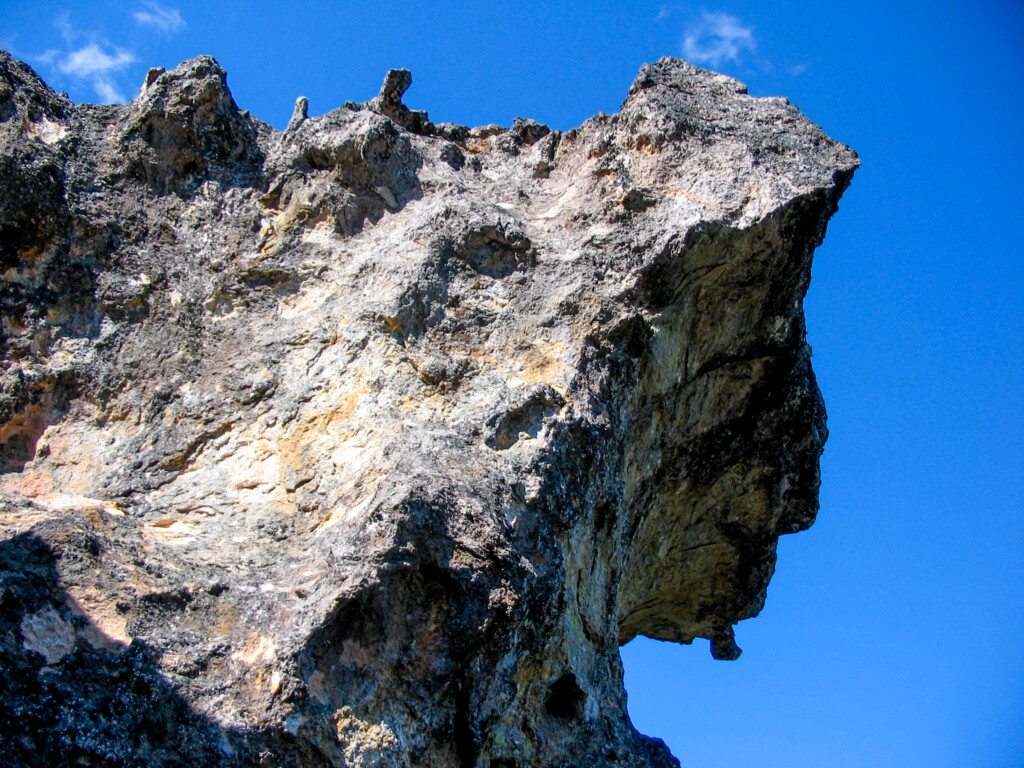
Details of the head (Aug. 2007).
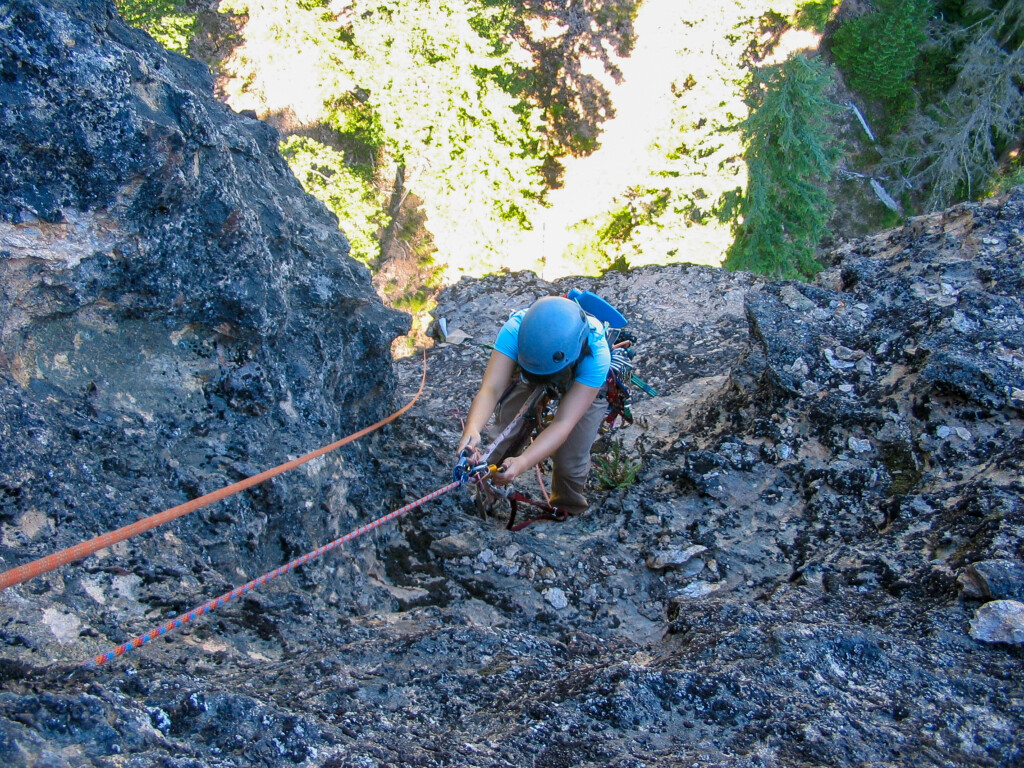
Nearing the belay (Aug. 2007).
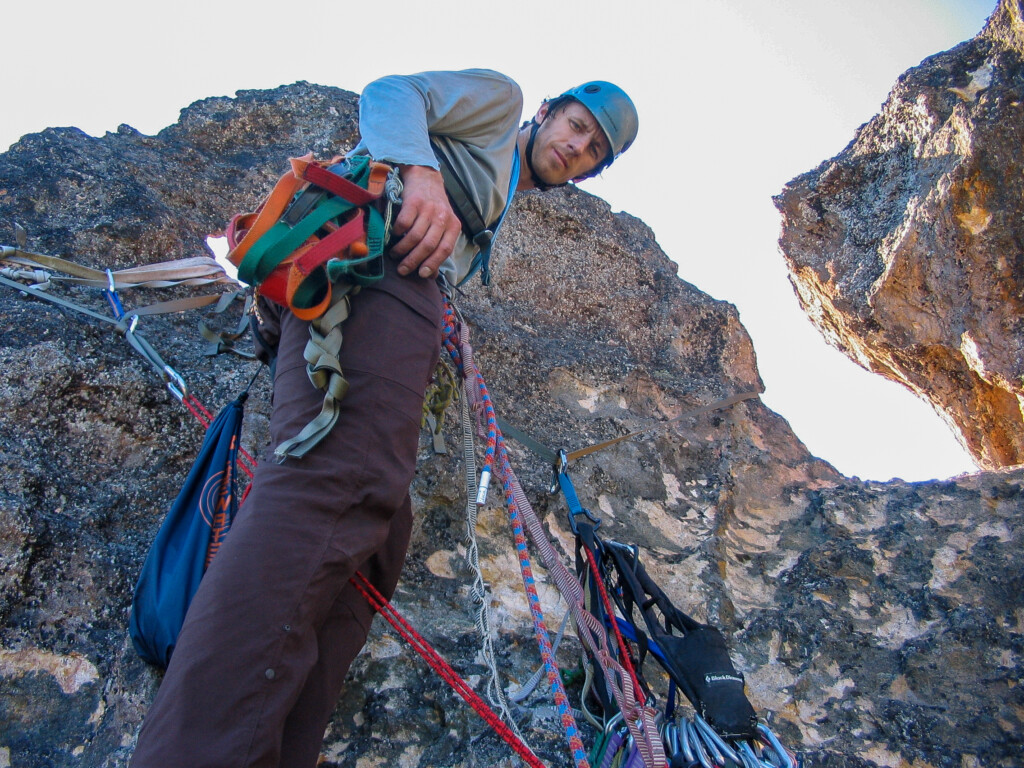
Yours truly on the summit of Turkey Monster tower. The summit belay/rap set up is behind me: a nice window in a somewhat thin fin of rock for slinging webbing (Aug. 2007).
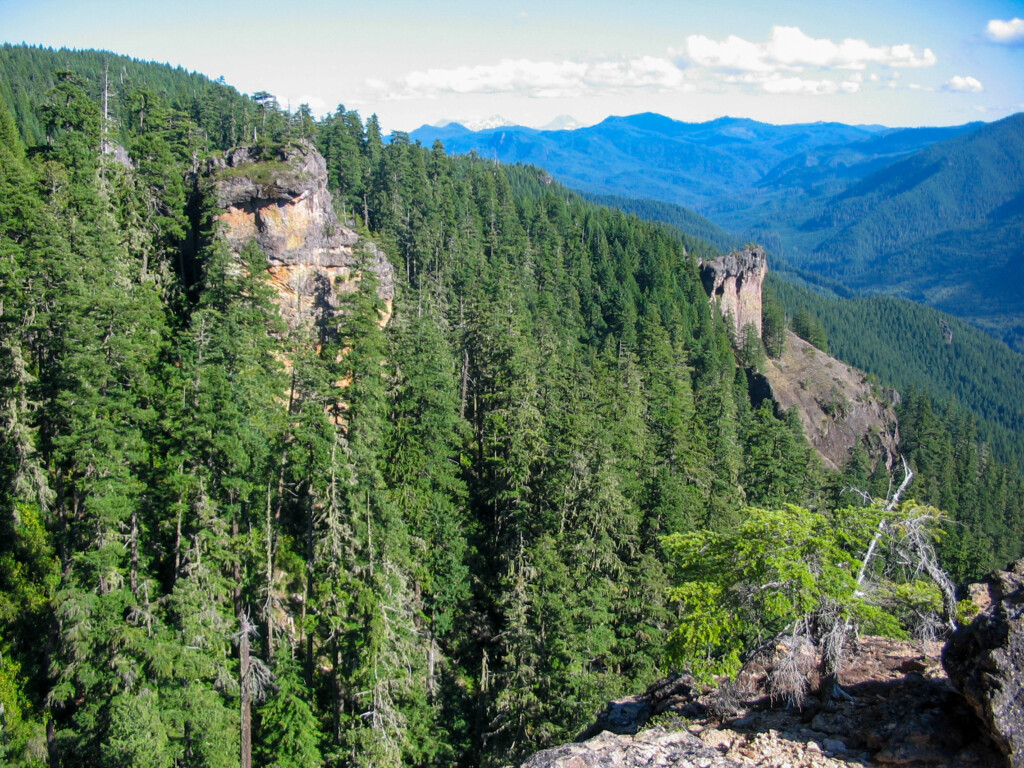
Views from the sub summit ledge (Aug. 2007).
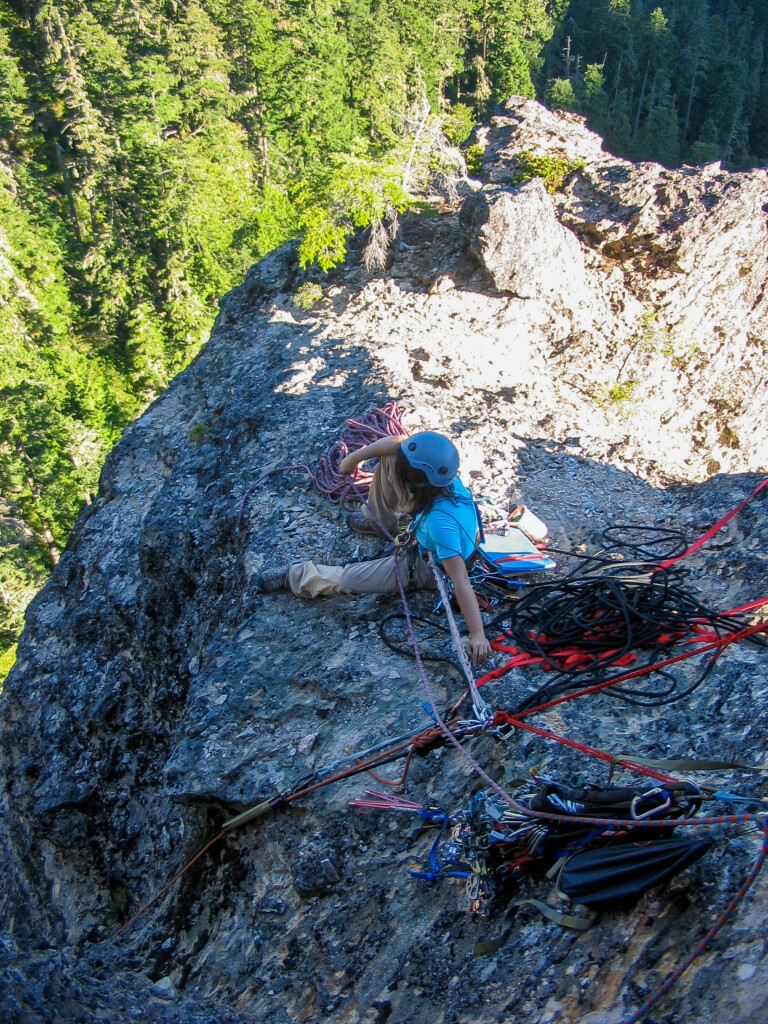
Shirley on the summit of Turkey Monster. This is actually about 8 feet below the top of the Turkey’s head – a surprisingly large flat area (Aug. 2007).
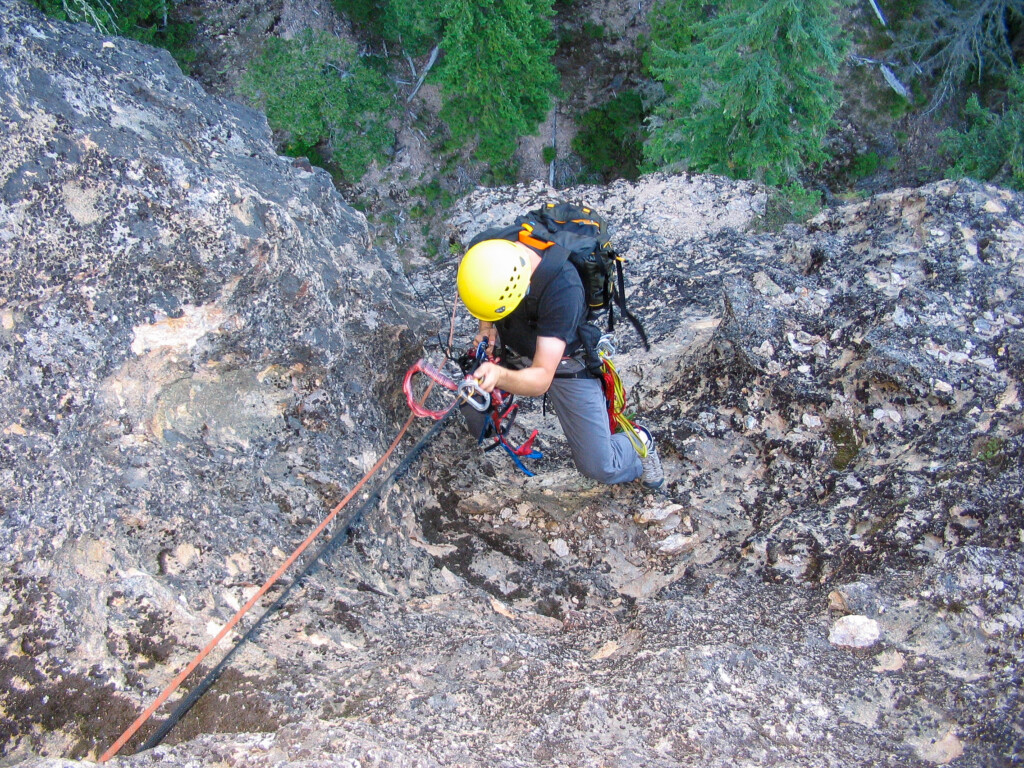
Our friend Pat nearing the summit of the Turkey Monster tower (Aug. 2007).
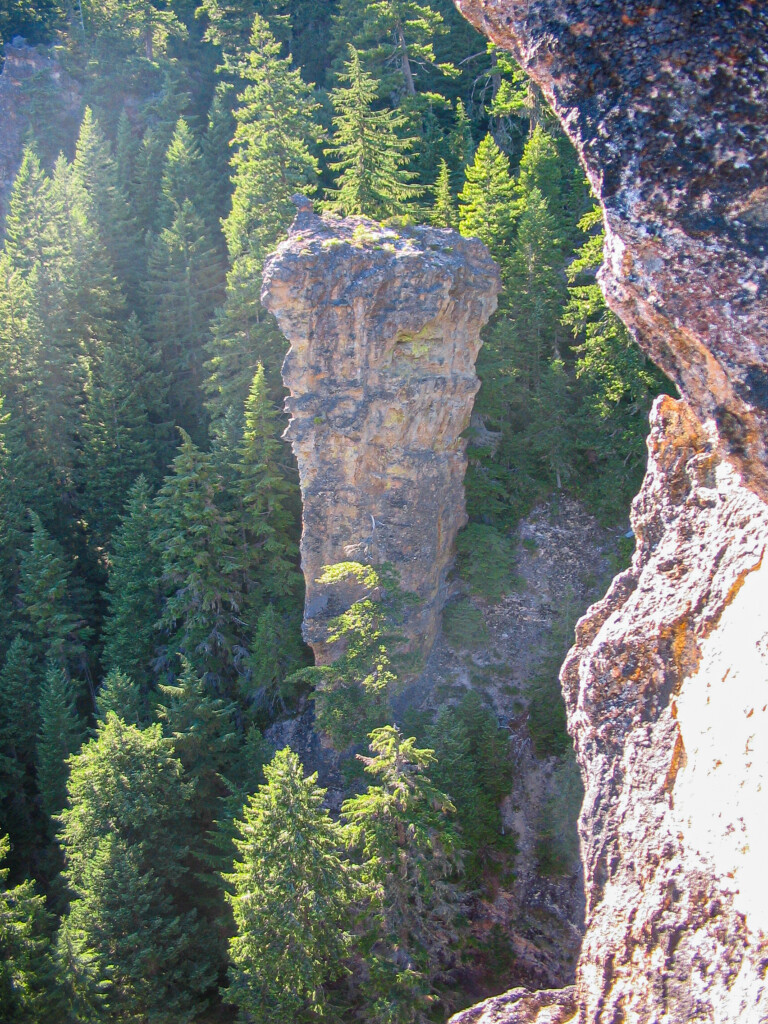
The Beast from just below the summit (Aug. 2007).
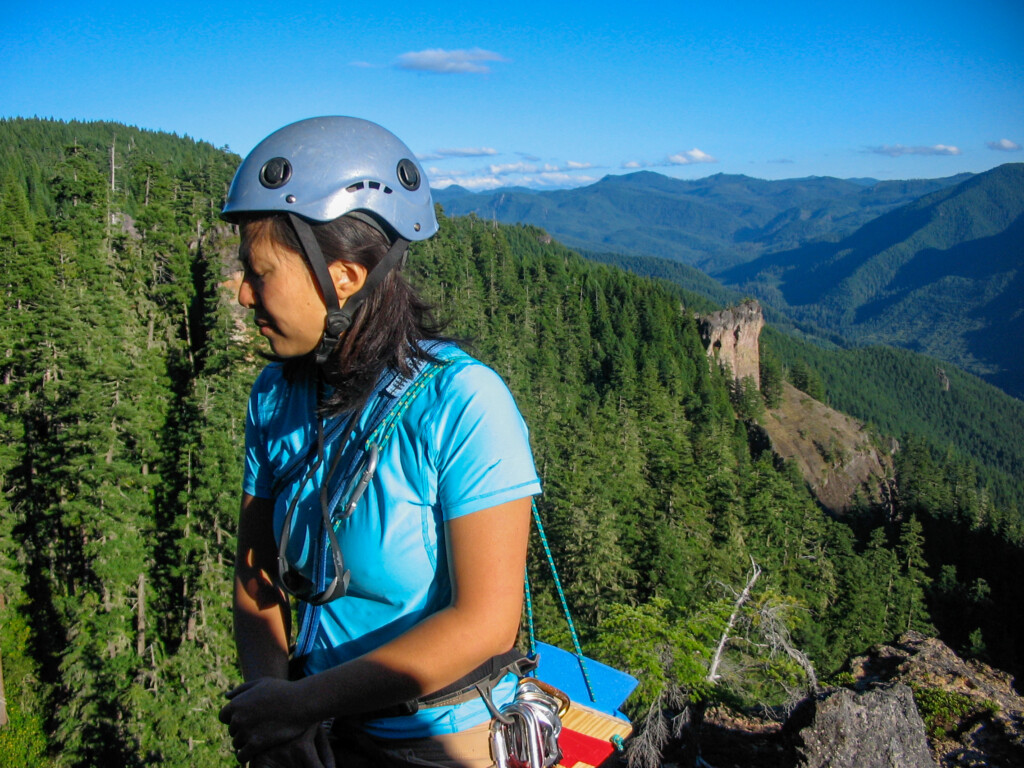
Shirley on the summit (Aug. 2007).
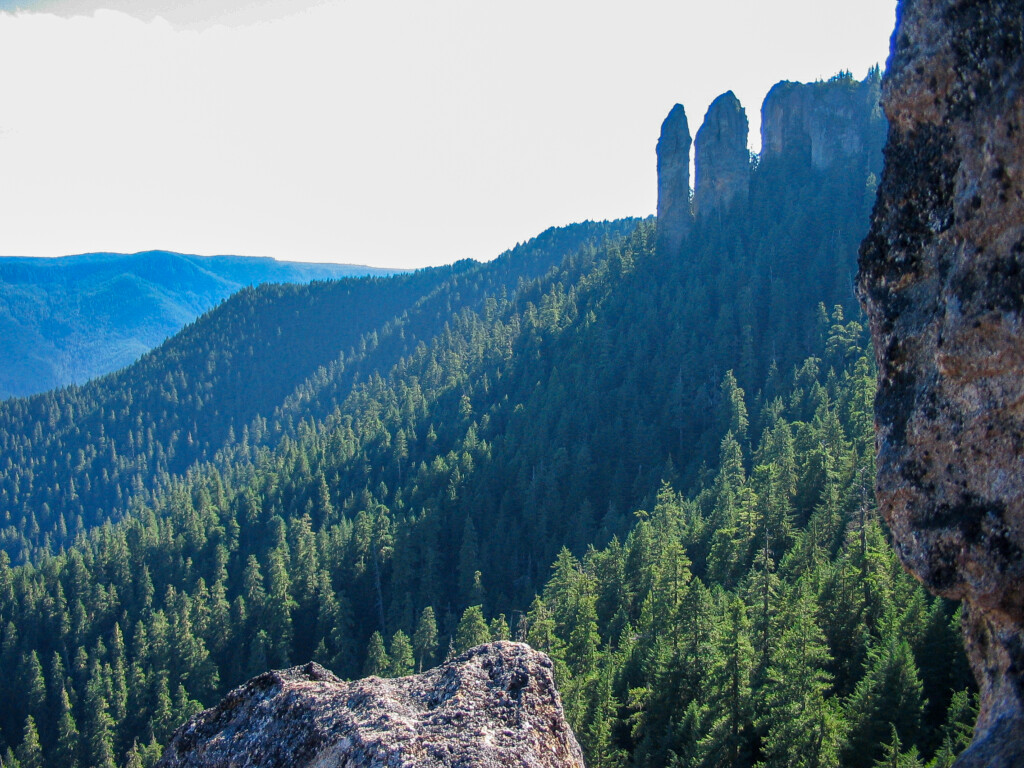
The Rabbit Ears from the sub summit shelf (Aug. 2007).

Shirley rapping off the tower – somewhat a tricky descent given the severely overhanging nature of the faces (Aug. 2007).

Shirley jugging up the steepish terrain on the way out after our climb of The Monster (Aug. 2007).
Go back to Oregon Cascades.